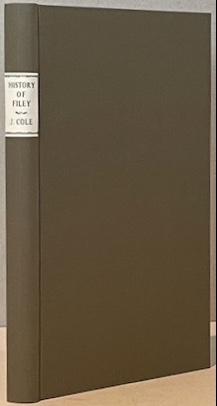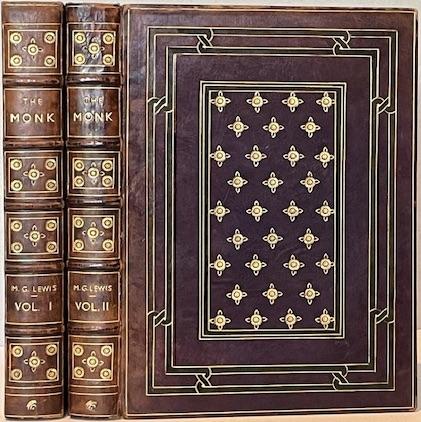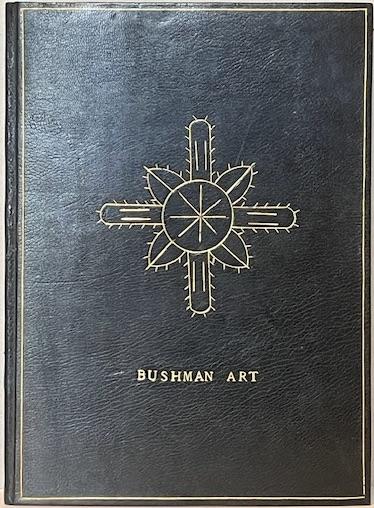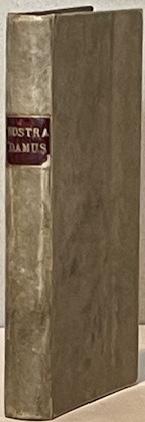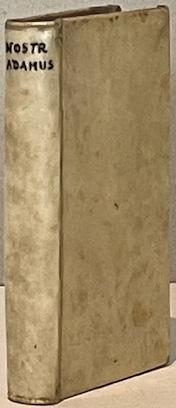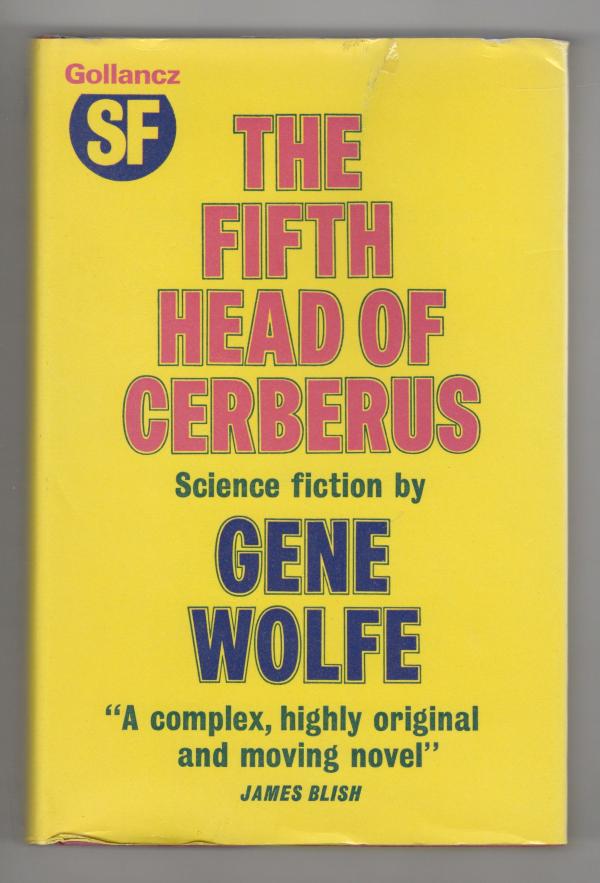
The Fifth Head of Cerberus by Gene Wolfe (First UK Edition) File Copy
Gene Wolfe The Fifth Head of Cerberus by Gene Wolfe (First UK Edition) File Copy A tight bright unread copy with bumped upper corner. "Archive Copy" stamp to title page. A bright dust jacket with a half-inch scrape to upper cover and rubbed corner tip. Not price-clipped. Not price-clipped. Publisher's File Copy. First UK Edition. Three novellas.- $100
- $100

The Fifth Head of Cerberus by Gene Wolfe (First UK Edition) File Copy
Gene Wolfe The Fifth Head of Cerberus by Gene Wolfe (First UK Edition) File Copy A tight bright unread copy with bumped upper corner. "Archive Copy" stamp to title page. A bright dust jacket with a half-inch scrape to upper cover and rubbed corner tip. Not price-clipped. Not price-clipped. Publisher's File Copy. First UK Edition. Three novellas.- $100
- $100
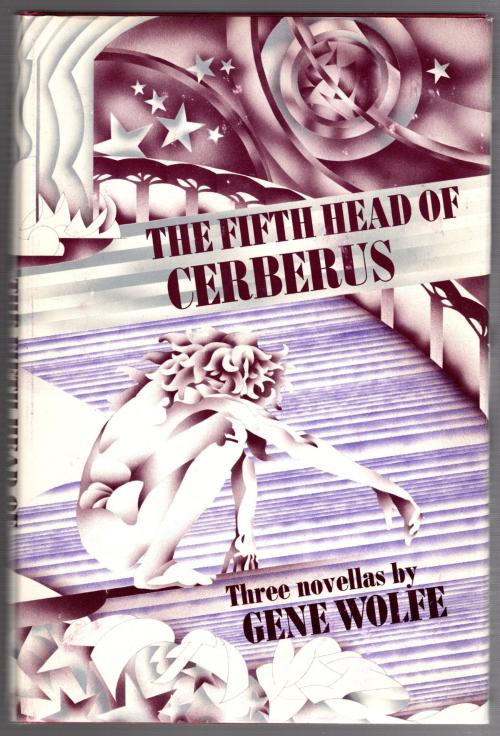
The Fifth Head of Cerberus by Gene Wolfe (First Edition)
Gene Wolfe The Fifth Head of Cerberus by Gene Wolfe (First Edition) A sharp tight copy. Bright gilt to spine. Pictorial dust jacket. Very minor edgewear. Not price-clipped. First Edition. No later printings listed. A collection of three novellas.- $100
- $100
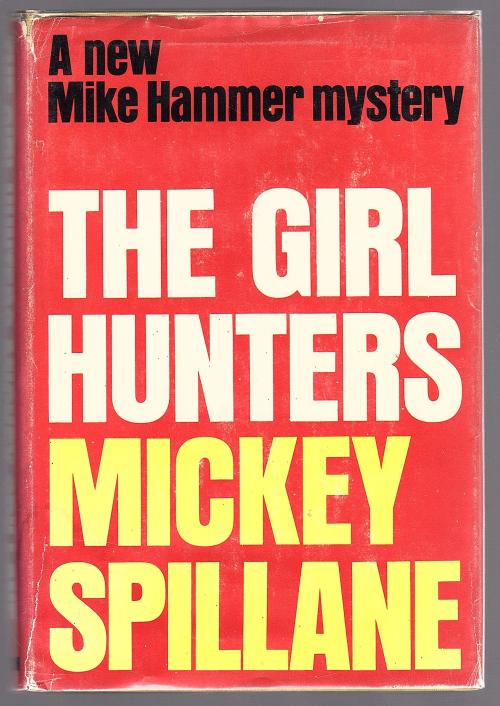
The Girl Hunters by Mickey Spillane (First Edition) Signed
Mickey Spillane The Girl Hunters by Mickey Spillane (First Edition) Signed Firm square copy. Minor wear to edges and spine ends with 2 inch tear to bottom front cover. Not price-clipped. In clear protective cover. Stated first edition. Mike Hammer mystery. Hardboiled mystery and action. Filmed from Spillane?s script and starring the author himself and Shirley Eaton. Signed by author on plate pasted onto half title page.- $150
- $150

In an Unpublished Letter, President Thomas Jefferson Manages the Expense of his Presidential Household and his Estate in Monticello (He seeks to stretch his funds for months in an attempt to avoid borrowing against future earnings)
Thomas Jefferson Among the recipients were his servants, chef, coachman, and others, during a time when Meriwether Lewis was living with him?A remarkable letter showing the fragile nature of the former President's and founding father's personal financial state and how he juggled funds?This letter, unpublished and whose content was not known till now, was last sold in 1929 through the firm of Thomas Madigan in New York City. It was acquired by us from the heirs of that buyer.https://vimeo.com/973483379?share=copy?Thomas Jefferson lived with his debt throughout much of his life, inheriting debt from his father and living beyond his means with large projects and lavish lifestyle. Eventually this would lead to the sale of his property and land. And his Presidential salary did little to alleviate this. His personal household expenses were such that he was essentially paying bills paycheck to paycheck, a sharp contrast to how we imagine the personal finances of an American president today.John Barnes emigrated from England to America about 1760. He was a tea merchant and grocer in New York and Philadelphia, relocating to the latter city when the federal government moved there in 1791. Barnes remained in Philadelphia until 1800, when he moved to Washington to serve as a contractor with the Treasury Department. Jefferson had known him for many years and appointed him customs collector at Georgetown in 1806, a position Barnes held until his death. He was during much of this time also Jefferson's banker and commission agent, helped him manage the investments of Tadeusz Kosciuszko and William Short, and supplied him with groceries from 1795 until Jefferson's retirement. Barnes kept his personal house running during his time in Washington at the Presidential Mansion.In May 1802, Jefferson wrote a letter with dire news of his finances. "I received yesterday your favor of the 10th. and am sincerely concerned at the disappointment at the bank of Columbia [which evidently would not supply him with needed funds]. This proves farther the propriety of my curtailing expenses till I am within the rigorous limits of my own funds, which I will do. in the mean time I must leave to your judgment to marshall our funds for the most pressing demands, till I can be with you."In June, Jefferson wrote to Barnes explaining what the main outstanding bills would be that they might trim. These were the prime recurring bills of his household presidency during this time. "Th: Jefferson has been taking a view of his affairs, and sends mr Barnes a statement of them. if it should be possible to get through the month of July without the aid of the bank, by my giving a new note there on the 4th of August for 2000. Doll. we should on that day be almost completely relieved, and the receipt of the 4th. of October will take up the note, and leave me entirely out of debt. Perhaps we may not be able to squeeze down the houshold expenses to 600."LeMaire?s bills @ 75. D a week would be 337.Dougherty?s are per month about 70.groceries about 120.servant?s wages 152"Lemaire was his steward and helped with meal preparation. Doughtery was his coachman and servant. Among the other servants were former slaves, including James Hemings. There were white and free black servants, some remaining for long periods of time and living there or close; others would come and go and performed specific tasks.Money was also paid for ad hoc expenses and money sent home to Monticello and to his daughter. Jefferson evidently felt that the largest chunk and perhaps where he could trim expenses was his domestic situation.Interestingly during this time Meriwether Lewis was serving as Jefferson's secretary and living in the presidential mansion.He evidently provided that note in late Summer to the bank and hoped that it would last a while, a point on which Barnes evidently had some concern. Jefferson did his own tally and explained the situation to Barnes in this letter, explaining that he calculated it would last him through the winter.Autograph letter signed, Washington October 15, 1802, to John Barnes. ?In answer to my letter which had mentioned that I should be obliged to go again into the bank, you were so kind as to say, the balance then being between $1700 and $1800, that from this balance you could accommodate yourself for 2 or even 4 months rather than take it from the bank. I have taken an exact view of all the calls which will come to me through the winter and send you a statement of them and of the times they must be answered with the immediate sums of compensation to be received and applied to meet them. By this it appears that the balance due from me will always be under $1700 and will be completely surmounted March 4. This is longer than you had contemplated, and I therefore propose that the moment you find any inconvenience from it, now or any time hence, you accept my note to be discounted at the bank, which I shall always be ready to give you. Accept assurance of my affectionate esteem??The Papers of Thomas Jefferson notes that "A letter from TJ to Barnes dated 15 Oct. is recorded in SJL but has not been found."This letter, unpublished and whose content was not known till now, was last sold in 1929 through the firm of Thomas Madigan in New York City. It was acquired by us from the heirs of that buyer.- $40,000
- $40,000
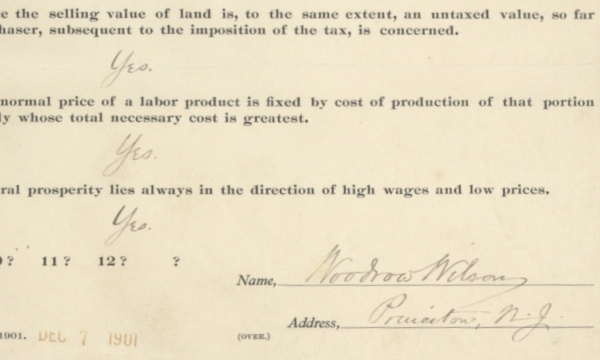
Woodrow Wilson Says ?General Prosperity Lies Always in the Direction of High Wages and Low Prices? (The Progressive Wilson also feels, ?Wages, while apparently drawn from capital and dependent upon capital, are primarily the product of labor; hence it is practically true that labor produces its own wages)
Woodrow Wilson Likely a unique document, as we?ve never seen another anything like thisThe turn of the 20th century was a time in which there was much interest in political economy, and those working in that field were often polled to determine whether a consensus on questions of interest could be had. For example, in 1908 the American Economic Association Quarterly, based in Princeton, N.J., polled political economists, trying to elicit from them a consensus upon certain definitions and statements of principle, touching land, value, and land taxation. The result was published in an article entitled ?Agreements in Political Economy? A similar poll, likely from the same source in Princeton, was taken in 1901, with the political economists receiving a set of questions on which they might agree on a form headed ?Possible Agreements? One of the political economists included in the survey was Woodrow Wilson.In 1901 Woodrow Wilson was a professor at Princeton, holding that position from 1890-1902, after which he became President of Princeton University. He had written a number of books on politics and government, so was an obvious choice for inclusion in the poll. Among the positions taken by Wilson were that wages are primarily the product of labor; labor produces its own wages; the normal price of a labor product is fixed by cost of production of that portion of the supply whose total necessary cost is greatest; and general prosperity lies always in the direction of high wages and low prices.Document signed, headed ?Possible Agreements?, the questions relating to political economy drafted by the publisher, the responses written out by Wilson, Princeton, December 1901.1. ?Wages," while apparently drawn from capital and dependent upon capital, are primarily the product of labor; hence it is practically true that labor produces its own wages. Wilson says ?Yes.?2. ?Ground rent" is what land is worth for use. Wilson writes, ?Yes, though generally in practice less than the use is worth.?3. Public franchises" are exclusive free privileges granted to one or several persons incorporated, and from which the mass of citizens are excluded. These franchises usually pertain to land, including, as they do, (to use the language of the New York Legislative Ford Bill,) all & rights, authority or permission to construct, maintain or operate, in, under, above, upon or through, any streets, highways, or public places, any mains, pipes, tanks, conduits, or wires, with their appurtenances, Wilson responds, ?Yes, though I do not understand the use of the word ?free? by way of depiction in the first line.?4. A tax upon ground rent is a direct tax and cannot be shifted. Wilson says, ?Yes.?5. The selling value of land is, under present conditions in most of the American States, reduced by the capitalized tax that is laid upon it. Willson replies, ?Yes, so far as I understand the statement.?6. Hence the selling value of land is, to the same extent, an untaxed value, so far as any purchaser, subsequent to the imposition of the tax, is concerned. Wilson says, ?Yes.?7. The normal price of a labor product is fixed by cost of production of that portion of the supply whose total necessary cost is greatest. Wilson writes, ?Yes.?8. General prosperity lies always in the direction of high wages and low prices. Wilson answers with a strong ?Yes.?The document is signed ?Woodrow Wilson, Princeton, N.J.?A fascinating insight into Wilson?s opinions on matters of political economy, especially his belief that general prosperity lies in the direction of high wages and low prices. It is also likely unique, as we?ve never seen another document anything like this.- $2,500
- $2,500
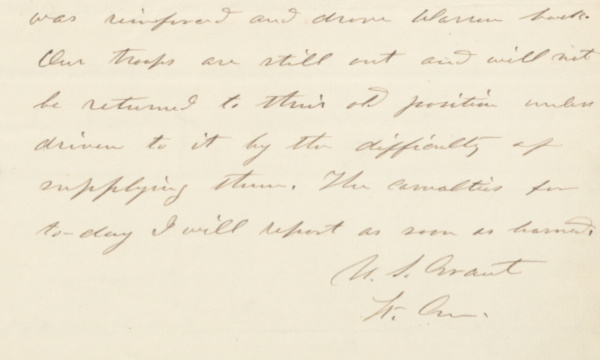
Lieut. Gen. Ulysses S. Grant?s Original Battle and Casualty Report for Action Around Petersburg, Addressed to Secretary of War Edwin M. Stanton (Amidst the Battle of Hatcher?s Run, during the latter stages of the Petersburg siege, he reports to Stanton, “The enemy attacked a port of the 2d Corps and were handsomely repulsed.?)
Ulysses S. Grant The Confederates, Grant updates Stanton, ?were leaving a part of their dead for us to bury, our losses were three officers & eighteen men killed, eleven Officers & ninety-two men wounded and twenty-two men missing.?Grant writes: ?In front of one Brigade of Mott?s Div. he buried thirty-one of the enemy and counted twenty two graves besides some of which were large enough for five or six bodies each. Gen. Smythe estimates the loss of the enemy in his front at two hundred. Our captures for the day were about one hundred men, half of them taken by the Cavalry and the rest by the 5th & 2d Corps. This afternoon the 5th Corps advanced and drove the enemy back on to this Artillery, probably into his entrenchments, beyond Dabney?s Mill. The casualties for to-day I will report as soon as learned.?Unique in our experience, this being the only battle and casualty report from Grant we have ever seen.By February 1865, the stalemate around Petersburg had entered its eighth month. Lieut. Gen. Ulysses S. Grant planned a Union offensive to deprive the Confederates of supplies, and also hasten the fall of Petersburg. The Union objective was to send Brig. Gen. David McM. Gregg's cavalry out to the Boydton Plank Road to destroy all the Confederate supply wagons they could find, while the V Corps and II Corps provided support and kept the Confederates occupied to the north and east. Pursuant to plan, Union forces began to stretch their battle lines to the west in an attempt to get Gen. Robert E. Lee's under-strength army to do the same.On February 5th, Union Brig. Gen. David Gregg?s cavalry division rode out to the Boydton Plank Road via Reams Station and Dinwiddie Court House in an attempt to intercept Confederate supply trains. Maj. Gen. Gouverneur K. Warren with the Fifth Corps crossed Hatcher?s Run and took up a blocking position on the Vaughan Road to prevent interference with Gregg?s operations. Two divisions of the Second Corps under Maj. Gen. Andrew A. Humphreys shifted west to near Armstrong?s Mill to cover Warren?s right flank. Late in the day, Confederate Maj. Gen. John B. Gordon attempted to turn Humphreys' right flank near the mill but was repulsed. During the night, the Federals were reinforced by two divisions.On February 6th, Gregg returned to Gravelly Run on the Vaughan Road from his unsuccessful raid and was attacked by elements of Brig. Gen. John Pegram?s Confederate division. Warren pushed forward a reconnaissance in the vicinity of Dabney?s Mill and was attacked by Pegram?s and Maj. Gen. William Mahone?s divisions. Pegram was killed in the action. Although the Union advance was stopped, the Federals extended their siege works to the Vaughan Road crossing of Hatcher?s Run. On February 7, Warren launched an offensive and drove back the Confederates, recapturing most of the Union lines around Dabney's Mill that had been lost the day before. Thus, the Confederates kept the Boydton Plank Road open, but suffered attrition and were forced to further extend their thinning lines.Autograph letter signed ?U. S. Grant, Lt. Gen.,? two pages, Head Quarters Armies of the United States letterhead, City Point, Virginia, February 6, 1865, amidst the battle, to Secretary of War Edwin M. Stanton, about the first day?s fighting and plans of the next day: ?In the affair of yesterday when the enemy attacked a port of the 2d Corps and were handsomely repulsed, leaving a part of their dead for us to bury, our losses were three officers & eighteen men killed, eleven Officers & ninety-two men wounded and twenty-two men missing. In front of one Brigade of Mott?s Div. he buried thirty-one of the enemy and counted twenty two graves besides some of which were large enough for five or six bodies each. Gen. Smythe estimates the loss of the enemy in his front at two hundred. Our captures for the day were about one hundred men, half of them taken by the Cavalry and the rest by the 5th & 2d Corps. This afternoon the 5th Corps advanced and drove the enemy [Grant strikes through ?inside this intrenchment?] back on to this Artillery, probably into this entrenchments, beyond Dabney?s Mill. Here the enemy was reinforced and drove Warren back. Our troops are still out and will not be returned to their old position unless driven to it by the difficulty of supplying them. The casualties for to-day I will report as soon as learned.?This is a true piece of history - the original report on the Battle of Hatcher?s Run, completely in the hand of Grant, as sent to Stanton. And considering the amount of time Lincoln spent at Stanton?s office, quite likely he would have seen or learned details of the report. It?s the only the battle and casualty report from Grant we have ever seen on the market.- $32,000
- $32,000
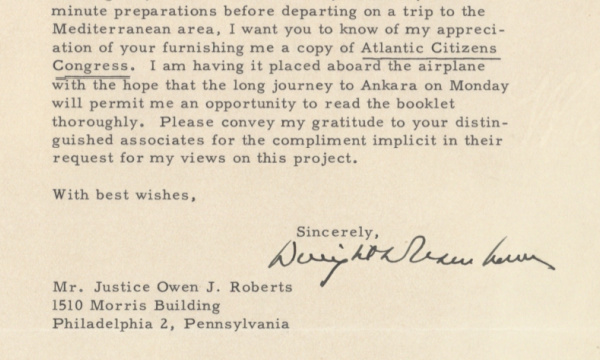
NATO Head Dwight D. Eisenhower Announces That He is Going to Turkey for the Official Reception of Turkey into NATO (He also expresses gratitude for information on a new offshoot of the Atlantic Union, designed to promote peace by federating member states)
Dwight D. Eisenhower Justice Owen J. Roberts resigned from the Supreme Court to advocate for a Federal Union of democracies, and to unite one group favoring world government and the other favoring Union of the DemocraciesFrom 1951-52, Eisenhower was the Allied Supreme Commander in Europe, which title included the post of head of NATO. In 1952, Turkey joined NATO, and Ike traveled to Ankara, Turkey, to seal with his presence the membership of Turkey in Europe.Justice Owen J. Roberts resigned from the Supreme Court in 1945, and was afterwards instrumental in forming the Atlantic Union, which would advocate for a Federal Union of Democracies, but with a gradual approach to final world union by way of regional unions. Two million people signed a petition that the U.S. and Great Britain unify, others wanted to start with the U.S. and Canada. Roberts said that although he approved of NATO, he thought it was a fine tradition but could not prevent war, and that permanent peace required a federation of likeminded peoples. Nor could the UN be relied upon, with the power the Soviets had in that body. In 1952, a new group was formed whose members agreed with Roberts? views, the Atlantic Citizens Congress, whose members were drawn partly from the Atlantic Union Committee, and partly from outside.Typed letter signed, on his letterhead, Supreme Headquarters Allied Powers Europe, 1 March 1952, to Justice Owen J. Roberts, saying he is departing for Turkey and that he is grateful for receiving information on the new Atlantic Citizens organization. ?Dear Mr. Justice: Although my schedule is extremely rushed by last minute preparations before departing on a trip to the Mediterranean area, I want you to know of my appreciation of your furnishing me a copy of Atlantic Citizens Congress. I am having it placed aboard the airplane with the hope that the long journey to Ankara on Monday will permit me an opportunity to read the booklet thoroughly. Please convey my gratitude to your distinguished associates for the compliment implicit in their request for my views on this project.?Eight months later, Eisenhower is elected President of the United States.- $3,000
- $3,000
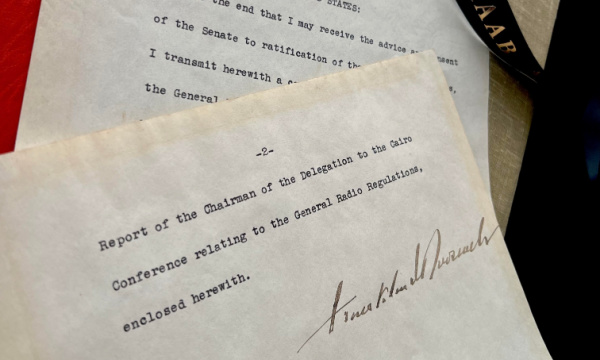
President Franklin D. Roosevelt, in Accordance with Article II of the U.S. Constitution, Formally Seeks the ?Advice and Consent? of the Senate to an International Treaty (The war-date agreement had to do with telegraph, radio, and telephone communication)
Franklin D. Roosevelt ?To the end that I may receive the advice and consent of the Senate to ratification of the revised regulations, I transmit herewith a certified copy of the revision of the General Radio Regulations annexed to the International Telecommunications Convention???A rare letter of any president to the U.S. Senate, and the first seeking the Constitutionally required ?Advice and Consent? that we have ever seenThe International Radiocommunication Conference was the first of the administrative radiocommunications conferences. It dealt with telegraph as well as telephone issues and was held simultaneously with the Administrative Telegraph and Telephone Conference in Cairo in 1938, under the banner of the International Telecommunication Conferences. The Telegraph Consultative Committee (CCIT) was reorganized and would function similarly to the Telephone Consultative Committee (CCIF). The CCIT would, from now on, be charged with the study of rate questions submitted to it by a plenipotentiary or administrative conference.The unification of code and plain language rates for telegrams within the European regime was adopted. The new fixed rate for coded telegrams was changed to 92% of the existing rate of plain language telegrams. The Telephone Regulations were modified to include the establishment of ?reversed-call charges? and ?urgent aircraft calls.? Urgent aircraft calls would be given priority over all other types of calls except urgent government calls.Participants agreed to use English as a supplementary language in conferences and meetings. The United States offered translating services for both of the conferences and compiled unofficial English translations. A vote determined that the Bureau would be responsible for future translations. A committee was created to resolve issues related to voting and to establish a recommendation for the next conference. A report was compiled and was approved for future voting at conferences.The increased demand and need for frequencies on intercontinental air routes was recognized. It was also decided that higher technical standards for transmitters through improved tolerance and band tables would be established. Limits were placed on the use of spark sets and maritime use was restricted to three frequencies. In addition, modifications were made to the regulations of the Maritime Mobile Service.The Radio Consultative Committee (CCIR) was reorganized. It would now be charged with the study of both technical and operations questions. Interval meetings would be held every three years.Changes were made to the Additional Radio Regulations with the establishment of a maximum charge of 20 centimes for radiotelegrams in the aeronautical service and the adoption of detailed regulations for new radio maritime letters.The Final Protocol to the General Radio Regulations was adopted and the agreement was ready to be ratified by the nations involved.A treaty is a binding agreement between nation-states that forms the basis for international law. Thus the agreement that resulted from this Conference was a form of treaty, and treaties signed by the United States must be ratified by the U.S. Senate to become law. Article II of the United States Constitution provides that the president "shall have Power, by and with the Advice and Consent of the Senate, to make Treaties, provided two-thirds of the Senators present concur.? President Roosevelt formally sought the Advice and Consent of the Senate to the Conference agreement.Typed letter signed, The White House, Washington, January 27, 1939, ?TO THE SENATE OF THE UNITED STATES? ?To the end that I may receive the advice and consent of the Senate to ratification of the revised regulations, I transmit herewith a certified copy of the revision of the General Radio Regulations annexed to the International Telecommunications Convention, signed at Madrid on December 9, 1932, adopted on April 8, 1938 by the International Telecommunication Conferences which convened at Cairo, Egypt, on February 1, 1938 to revise these regulations as well as the Additional Radio Regulations and the telephone and telegraph regulations also annexed to the Madrid Convention but which were not signed for the United States.Accompanying these revised general radio regulations is a certified copy of the Final Protocol to the General Radio Regulations, in which reservations thereto made by certain governments are recorded. The attention of the Senate is invited to the accompanying Report by the Secretary of State and to the Report of the Chairman of the Delegation to the Cairo Conference relating to the General Radio Regulations.?Letters of presidents to Congress are rarities.- $9,000
- $9,000

18th Century Letter Ladies Pocket Book, on red velvet, embroidered with silvered threads and sequin appliqués, red silk and leather lining, 10cm by 7cm
Ladies Pocket book Early 18th Century Pocket Book, on red velvet, embroidered with silvered threads and sequin appliqués, red silk and leather lining, 10cm by 7cm Lucy Locket lost her pocket, Kitty Fisher found it; Nothing in it, nothing in it, But the binding round it. Kitty Fisher" was the well-known British courtesan, Catherine Maria Fisher, who boasted assignations with many affluent 18th century gentlemen and was known for her flair for publicity. The "pocket" lost in the child's nursery rhyme refers to an 18th century purse. This fashion accessory came in several styles, one being the pocket case or letter case. They convey the dazzling opulence of affluent 18th century fashion and accessories. The elegantly worked carry-case was a smaller and more convenient adaptation of a ladies' pocket. These small pocket cases were used to hold bank notes , letters, pencils, and other small implements. They worn around a lady's waist and were accessed through slits in the skirt. Pockets were almost always decorated, this pocketbook is a particular grand example- $2,523
- $2,523
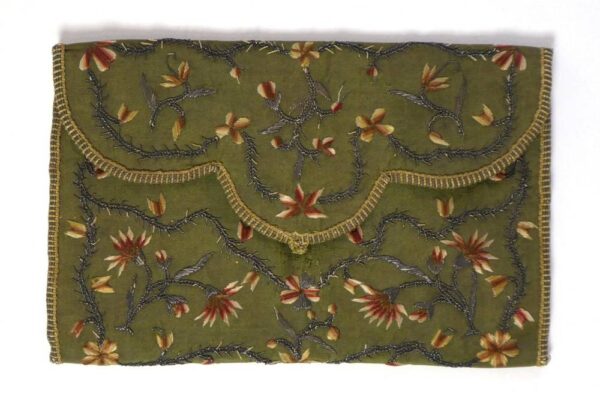
End of 18th/early 19th Century Green Silk Pocket Book, embroidered overall with pink and cream flower heads, on silvered stems, pale pink silk lining edged with silvered thread enclosing several pockets, 15cm by 10cm.
Jane Austen (time of) Green Silk Pocket Book, embroidered overall with pink and cream flower heads, on silvered stems, pale pink silk lining edged with silvered thread enclosing several pockets, 15cm by 10cm. Lucy Locket lost her pocket, Kitty Fisher found it; Nothing in it, nothing in it, But the binding round it. Kitty Fisher" was the well-known British courtesan, Catherine Maria Fisher, who boasted assignations with many affluent 18th century gentlemen and was known for her flair for publicity. The "pocket" lost in the child's nursery rhyme refers to an 18th century purse. This fashion accessory came in several styles, one being the pocket case or letter case. They convey the dazzling opulence of affluent 18th century fashion and accessories. The elegantly worked carry-case was a smaller and more convenient adaptation of a ladies' pocket. These small pocket cases were used to hold bank notes , letters, pencils, and other small implements. They worn around a lady's waist and were accessed through slits in the skirt. Pockets were almost always decorated, this pocketbook is a particular grand example- $2,242
- $2,242

Imaginary Gardens; A Study of Five American Poets
(Moore, Marianne) Sprague, Rosemary 8vo, 237pp; cloth. Com,prises chapters on Emily Dickinson, Amy Lowell, Sara Teasdale, Edna St. Vincent Millay, and Marianne Moore. This copy has been inscribed and signed by Moore in a shaky hand on the half-title page. Fine in a lightly marked dust jacket with a couple of short tears- $125
- $125
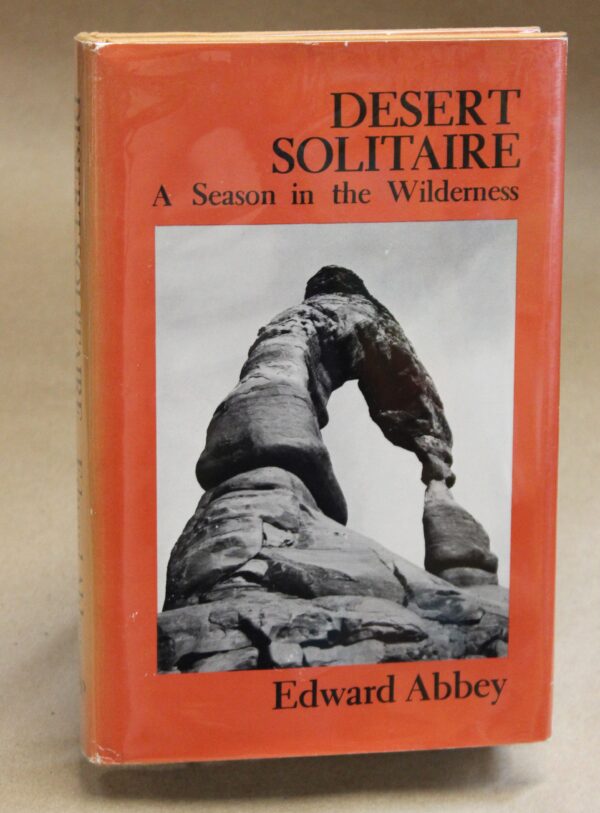
Desert Solitaire: a Season in the Wilderness
Abbey, Edward First Peregrine Smith edition from 1981, originally published in 1968. Inscribed by Abbey on the front free endpaper, dated 1983 in Gallup, New Mexico. Light orange boards with black lettering on cover and spine. Slight rubbing to edges; minor wrinkling to back joint. Orange pictorial dust jacket with black lettering on cover and spine. Jacket is wrapped in mylar and is not price clipped. Spine is faded; minor chipping and wear to edges; a bit of scratching. Rear hinge is cracked but binding is still fairly tight. Interior is clean. This edition features drawings by Abbey as well as an additional four-page author's introduction. Also includes black-and-white photos by Gibbs Smith on a small section of plates and the endpapers. Edward Abbey (1927-1989) was an acclaimed writer and cantankerous environmentalist. This is one of his classic books, a collection of meditations on Utah's canyon country drawn from the two seasons that Abbey worked as a park ranger in what was then Arches National Monument. The book blends a profound love for wilderness and a bitter abhorrence for those who would desecrate it. Signed copies of this edition are uncommon. ; B&W Illustrations; 8vo 8" - 9" tall; 269 pp; Signed by Author- $1,150
- $1,150

Cyprus
Mercator, Gerardus Cyprus. "Cyprus". Orig. copperplate engraving from Mercator's Atlas Minor. Published by J. Hondius in Amsterdam, 1609. With ornamental title cartouche, another cartouche with the scale of map and 6 inset maps of Aegean Islands (Lemnos - 'Stalimini', Chios - 'Chius', Lesbos - 'Mitilene', Euboea - 'Negroponte', Kythira - 'Cerigo' and Rhodes - 'Rhodus'). 14:19 cm (5 1/2 x 7 1/2 inch.) on paper sized 17,5:21 cm. Koeman III, map 8130:351, ed. 351:21 (1609 Atlas Minor [Ger.]). - A miniature map of Cyprus and the Aegean Islands.- $375
- $375
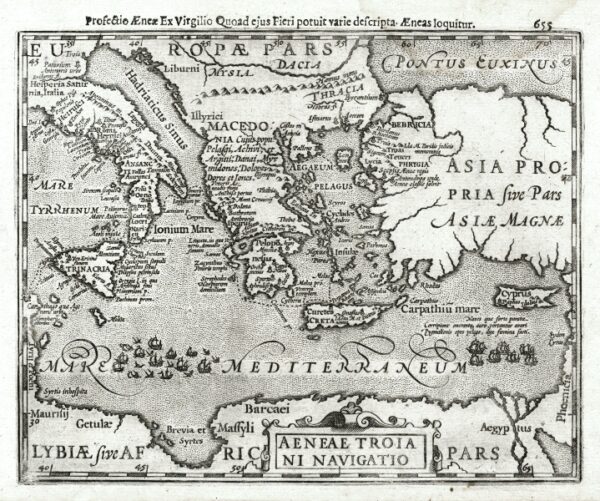
Aeneae Troiani Navigatio
Mercator, Gerardus Eastern Mediterranean. "Aeneae Troiani Navigatio". Orig. copperplate engraving from Mercator's Atlas Minor. Published by J. Hondius in Amsterdam, 1608. With ornamental title cartouche and title above the map ('Profectio Aenae Ex Virgillio Quoad eius Fieri potuit varie descripta. Aeneas loquitur'). 15:19 cm (6 x 7 1/2 inch) on paper sized 18:21,5 cm. Koeman III, map 0311H:351, ed. 351:11 (1608 Atlas Minor [Fr.]). - A miniature map map of Aeneas' travels in the Eastern Mediterranean - Italy, Sicily, Greece, Crete, Cyprus, Turkey.- $131
- $131
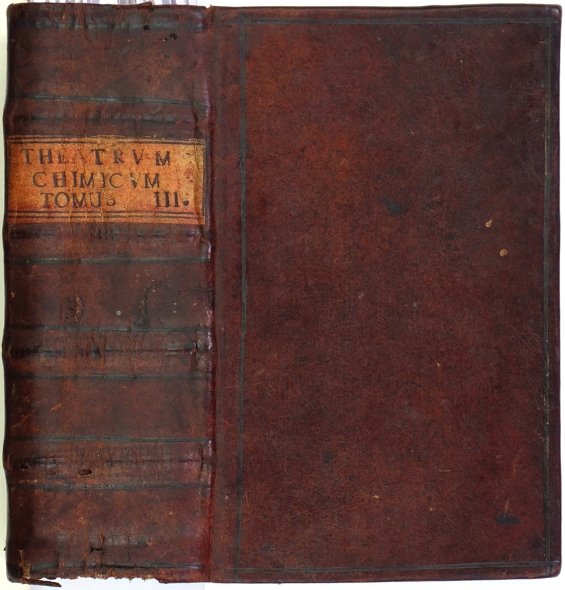
Deutsches Theatrum Chemicum
Roth-Scholtz, Friedrich Roth-Schlotz, Friedrich (Editor; 1687-1736). Chemie, Alchemie. "Deutsches Theatrum Chemicum, Auf welchem der berühmtesten Philosophen und Alchymisten Schriften, Die von dem Stein der Weisen, von Verwandelung der Schlechten Metallen in bessere, von Edelgesteinen, von Kräutern, von Thieren, von Gesund- und Sauer-Brunnen . Vorgestellet werden durch . Roth-Scholtzen". Nürnberg: Felsecker (Erben), 1732. 12mo. 960 S., 2 Kupferporträte (John Dee; 1527, London - 1608, Mortlake-Surrey - ein englischer Mathematiker, Astronom, Astrologe, Geograph und Mystiker vor der Seite 1 und Edward Kelley, auch Kelly; 1555, Worcester - 1597, Most, Tschechien - war ein englischer Alchemist und Spiritist vor der Seite 561), 3 Holzschnitt-Wappen. OLdr. aus der Zeit mit Titelschild auf der Rücken. Enthält alchemistische Schriften von Roger Bacon, Edward Kelley, Antonio de Abbatius und anderen, u.a. über den Stein der Weisen und die Goldherstellung, erschienen bei Felsecker, 1731: XXXI. Rogerii Baconis . Chymisch- und Philosophische Schrifften: Radix Mundi oder Wurtzel der Welt. Medulla Alchimiae, darinnen Vom Stein der Weisen, und von den vornehmsten Tincturen des Goldes, Vitriols und Antimonii, gahandelt wird. Tractat vom Golde. Tractat von der Tinctur und Oel des Vitriols. Tractat von . des Animonii. Send-Schreiben . von der Richtigkeit der falschen Magiae . XXXII. Gloria Mundi, Sonsten Paradeiß-Taffel. Alethopili Philosophische Betrachtung Von Verwandlung Der Metallen. Warnungs-Vorrede wider die Sophisten und Betrüger. Johannis Ticinensis . Johannis Ticinensis eines Böhmischen Priesters Chymische Schriften. Anthonii De Abbatia . ausgefertigtes Send-Schreiben von dem Stein der Weisen. . Anthonii De Abbatia Epistolae Duae, Scrutatoribus Artis Chymicae Mandatae. Edouardi Kellaei . Buch von dem Stein der Weisen. Edouardi Kellaei . Via Humida. Aula Lucis, Oder: das Hauß des Lichts durch S. N. ***. - Einband mit kl. Wurmlöchlein, sonst sauber und sehr gut erhalten.- $1,406
- $1,406
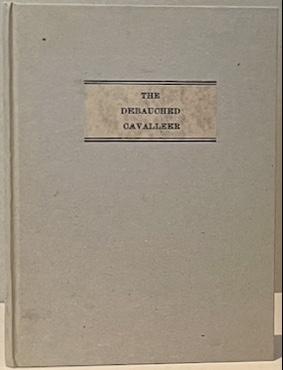
THE DEBAUCHED CAVALLEER: Or the English Midianite. Wherein are compared by way of Parallel, the Carriage, or rather Miscarriage of the Cavalleeres, in the present Reigne of our King Charles, with the Midianites of old. Setting forth their Diabolicall, and Hyperdiabolicall Blaspemies, Execrations, Rebellions, Cruelties, Rapes, and Robberies.
(LAWRENCE, george and Christopher Love.) G.L. and C.L. pp. 8. Smal 4to. Modern boards with front board label, new endpapers. With the bookplate of Fox Pointe Collection. Library of Dr & Mrs H.R. Knohl. Wing 656.Wing lists copies in 5 libraries.- $1,103
- $1,103
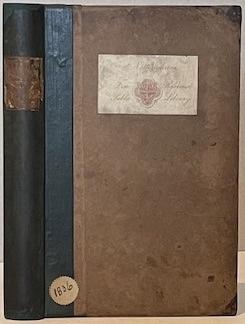
ARNALDO; GADDO; and other unackowledged poems, by Lord Byron, and some of his contemporaries; collected by Odoardo Volpi.
(SHANNON, Edward N). Bound with THE COMEDY OF DANTE ALIGHIERI: translated by Odoardo Volpi. pp. xiv, 296, xxxiv, 66, errata leaf. 8vo. Quarter cloth, original boards, spine relaid, new endpaper. With the bookplate of Nottingham Free Reference Public Library on the front board and a few stamps throughout. Chew p.178 and p.405. Chew devotes over 4 pages to this work and says' Arnaldo is the longest and most ambitious of all the pseudo-Byronic poems. BL- $2,206
- $2,206
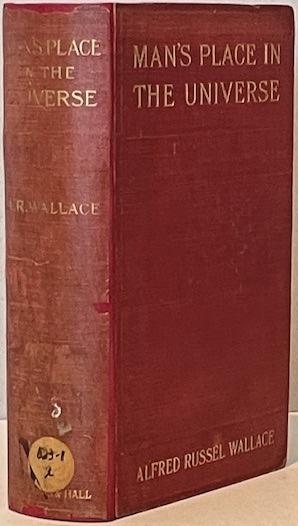
MAN’S PLACE IN THE UNIVERSE.
WALLACE, Alfred R. A Study of the Results of Scientific Research in relation to the Unity or Plurality of Worlds. pp. viii, 341, (i) of adverts. 1 plate folded. 8vo. Original cloth, spine relaid. New endpapers. Some foxing. 4th edition. Retains the original front free endpaper which is inscribed by Wallace " To his old Friend Arabella B. Buckley (Mrs Fisher) With the Author's very best wishes. January 20th 1905" This leaf is of very poor quality paper so very browned and frail. Arabella Burton Buckley's bookplate is retained on the inside of the front board. ODNB. Arabella Burton Buckley (1840 - 1929) was a writer and populariser of science. Her first book A Short History of Natural Science was published in 1876.- $1,765
- $1,765
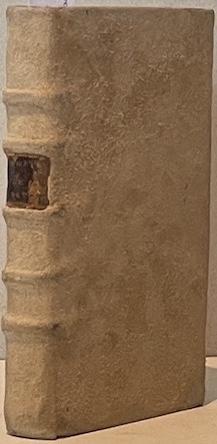
LES PROPHETIES DE M. MICHEL NOSTRADAMUS. Reueues et corrigees sur la copie Imprimee a Lyon par Benoist Rigaud en l’an 1568.
NOSTRADAMUS, Michel. 3 parts in 1. 64, 64, 64 leaves (A-H8, A-H8, A-H8). 8vo. Vignette on title page. Last 2 leaves of third part in facsimile. Reverse calf. COPAC University of Oxford Libraries.- $588
- $588
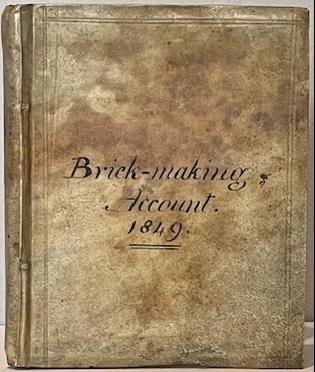
MANUSCRIPT BRICKYARD CAPITAL ACCOUNT.
(STRICKLAND, Henry Eustatius). pp. 10 leaves of accounts and 2 leaves of journal. The rest of the book is blank. 4to. Full vellum much browned. It would appear that Henry Eustatius Strickland, who built Apperley Court, had his own brick works as under Received (Season 1850) Dr H E Strickland June 17 From Self. Strickland built a chapel at Apperley which was comnpleted in1857. The journal at the back of the book chronicles, in brief, the creation of the brickworks.This branch of the Strickland family came from East Yorkshir. Henry's son Hugh was the renowned geologist Hugh Edwin Strickland, who was killed by a passenger train while avoiding a coal train.- $368
- $368
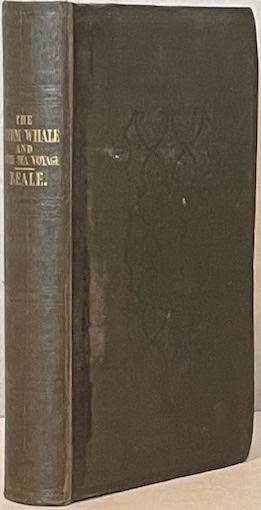
THE NATURAL HISTORY OF THE SPERM WHALE: . To which is added, a sketch of a South-Sea Whaling Voyage.
BEALE, Thomas, Surgeon. pp. 12, (ii) of subscribers, 393, (iv) of adverts dated 1838. Frontis, 2 plates. 8vo in 12s. Original cloth, spine relaid, recased slightly tightly, small section cut from half title. With the bookplate of Sir Edmund Giles Loder. 2nd edition- $1,471
- $1,471
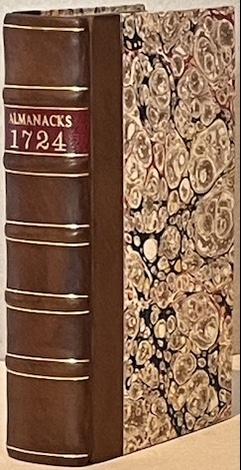
THE LADIES DIARY or, The Woman’s Almanack; GREAT NEWS FROM THE STARS: or, an Ephemeris; MERLINUS ANGLICUS JUNIOR: or The Starry Messenger; EPHMEPIS: or, A Diary Astronomical, Astrological, Meteorological; VOX STELLARUM: Being a Loyal Almanack; MERLINUS LIBERATUS: An Alamanack; PARKER’S EPHEMERIS The Thirty Fifth Impression; THE COELESTIAL DIARY: or an Ephemeris Sixth Impression; POOR ROBIN An Almanack after the Old and New Fashion;APOLLO ANGLICANUS: The English Apollo; PANTERPE; ID EST DELECTARE: or, an Almanack and an Ephemeris; GREAT BRITAIN’S DIARY: or, The Union- Almanack; John Wing’s ALMANACK; THE BRITISH TELESCOPE: being an Ephemeris of the Coelestial Motions, with an Almanack.
ALMANACKS. 14 Almanacks all for 1724, all published in London. 8vo. Modern contemporary style quarter calf, marbled boards, new endpapers. Slightly tight binding.- $662
- $662

Harry Potter and the The Deathly Hallows
ROWLING, J.K. (born 1965), [COCKCROFT, Jason, illustrator] [Children's Fantasy] FIRST EDITION, first impression. Octavo (21 x 14cm), pp.607 [1]. Publisher's pictorial paper over boards, with the matching dust-jacket illustrated by Cockcroft, priced at £17.99. A near fine copy showing just a touch of light handling. The final Harry Potter adventure. Philip Errington; J.K. Rowling. A Bibliography (London, Bloomsbury, 2017), A14(a).- $127
- $127
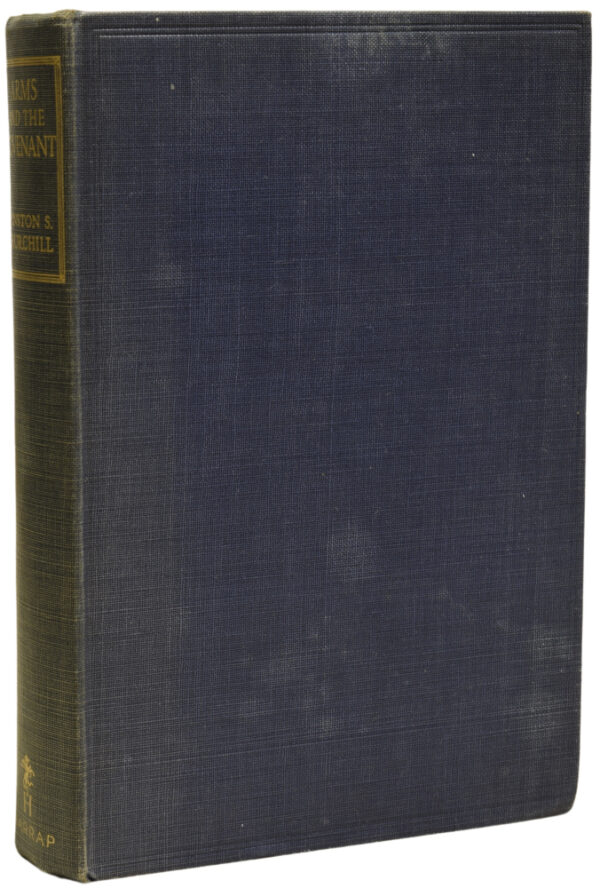
Arms and the Covenant. Speeches by the Right Hon. Winston S. Churchill, C.H, M.P., Compiled by Randolph S. Churchill
CHURCHILL, Winston S. (1874-1965) [Politics] FIRST EDITION, First Impression. Octavo (23 x 17cm), pp.466 [2]. With a frontispiece photograph of Winston Churchill. In publisher's blue cloth with gilt titles to spine. Top edge blue. One of just 5000 copies from the original print-run. Contents clean. First and final leaf of text block toned as usual, edges and covers lightly marked. Very good indeed. A volume of Churchill's speeches on National Defence and Foreign Affairs. The US version, entitled 'While England Slept' was published later in September 1938. Langworth p.192.- $394
- $394
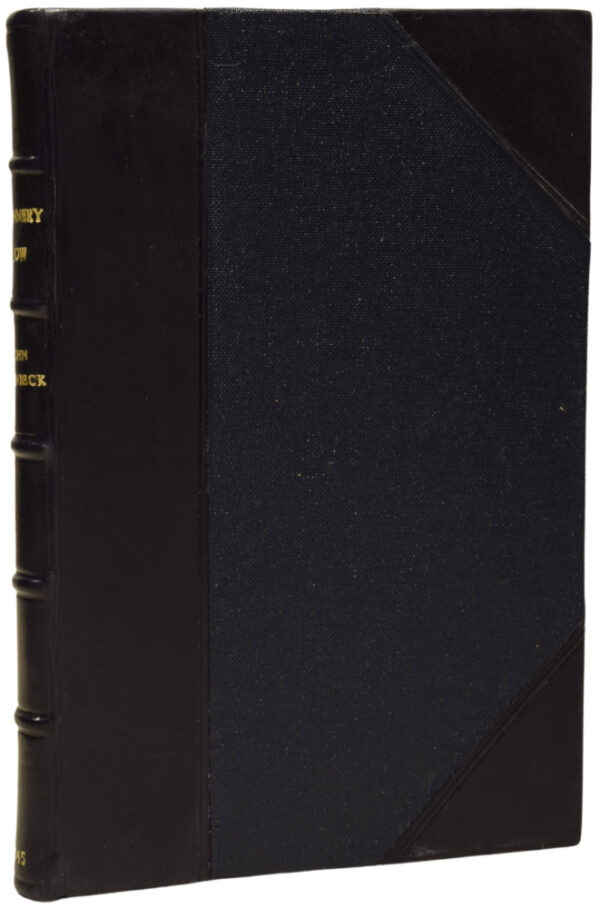
Cannery Row
STEINBECK, John (1902-1968) [American literature] LEATHER-BOUND FIRST UK EDITION, first impression. Octavo (20 x 14cm), pp.136. Elegantly bound in navy blue half calf over the matching cloth boards, raised bands and gilt titles to spine. The pages show brightly bearing in mind they have been printed on war economy standard paper, some slight marking to the edges; externally fine. A clean copy in a handsome recent leather binding. The classic depression-era novella set in a run-down street of sardine canneries in Monterey, California, being a story of misfits, death and loneliness in the aftermath of World War II.- $234
- $234
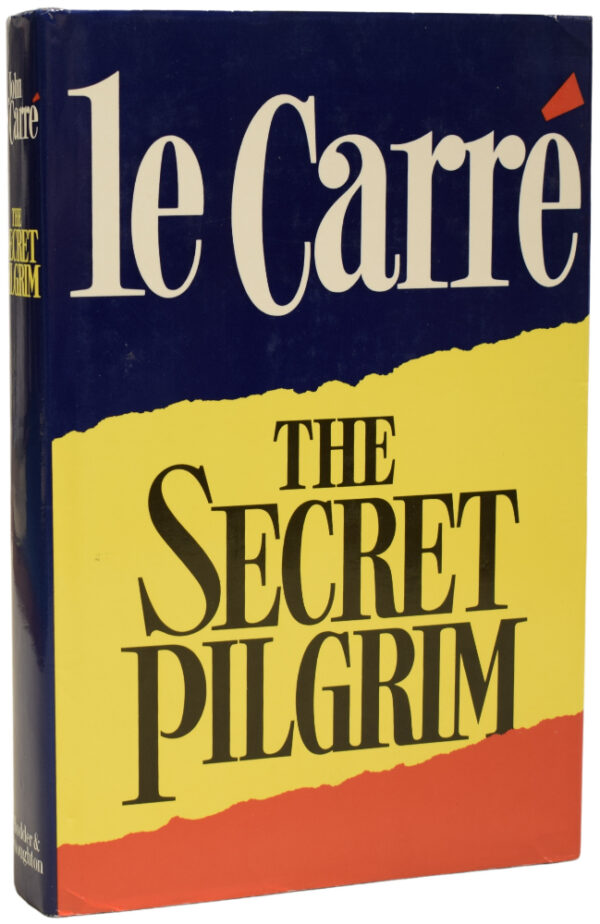
The Secret Pilgrim
LE CARRÉ, John [pseudonym of David John Moore CORNWELL] (1931-2020) [Spy thriller] SIGNED FIRST EDITION, first impression. Octavo (24 x 16cm), pp.[8] 335 [9]. SIGNED by the author in black ink to the title page. Publisher's purple cloth with gilt titles to spine and blue endpapers. With the blue, yellow and red dust-jacket, priced at £14.95. A crisp, fine copy. An espionage novel with George Smiley in a supporting role.- $194
- $194
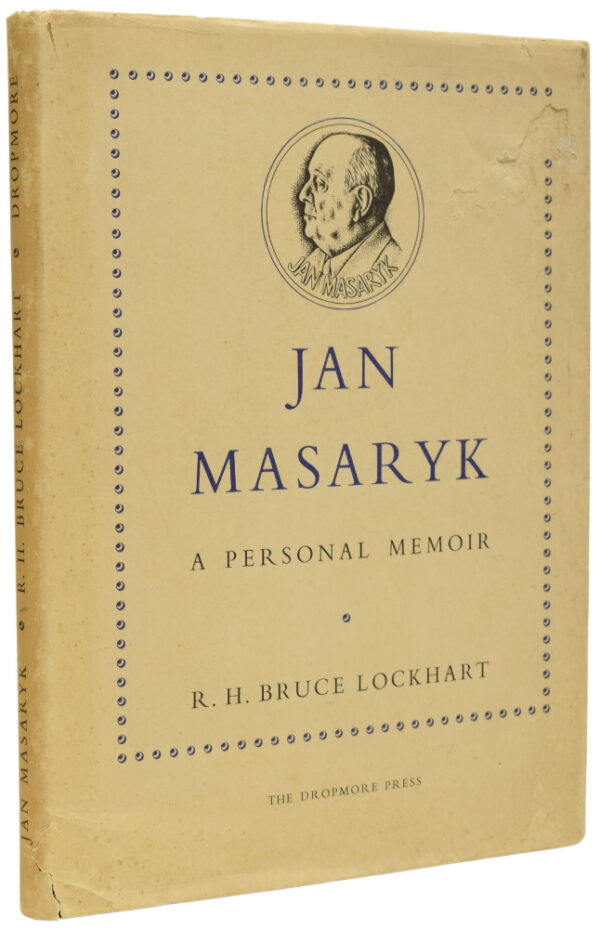
Jan Masaryk. A Personal Memoir
[Ian Fleming association] BRUCE LOCKHART, [Sir] R.H. [Military history /politics / espionage] LIMITED EDITION. One of five hundred copies. Quarto (27 x 20cm), pp.viii;80; [4], printed on hand-made cream wove paper, title and colophon printed in two colours. With fine colour illustration of the Masaryk Memorial Medal, 1948. Original full blue buckram, gilt, t.e.g., illustrated dust-wrapper priced £1, 10s, 0d. A stylish and expensive book for the time. Contents clean. A fine copy in near fine wrapper with small scuff to front panel. An elegant production from the publishing house run by Ian Fleming (renamed Queen Anne Press shortly after this release). Later owned by Fleming's bibliographer Jon Gilbert (also published by QAP). A record of their wartime friendship. Bruce Lockhart was a British diplomat, journalist, author, and secret agent. He was posted to Moscow with agent Sidney Reilly ('Ace of Spies'). His 1932 book Memoirs of a British Agent became an international best-seller, chronicling his experiences in Russia in 1918 following the Bolshevik Revolution. Masaryk was the Foreign Minister of the Czechoslovakian Government-in-exile who made regular BBC broadcasts from London to occupied Czechoslovakia. Masaryk's wartime speeches made him a national hero. Following liberation of his country, he remained Foreign Minister during the volatile immediate post-war years, with Czech communism on the rise, and the country's dealing of arms to Israel during the 1948 Arab-Israeli War. In March 1948 Masaryk was found dead in his pyjamas, having fallen from his balcony. The Ministry of the Interior claimed it was suicide but it was widely assumed he was murdered at the behest of the nascent Communist government. A 1968 investigation could not exclude murder, and an inquest following dissolution of Czechoslovakia concluded that he had been executed. Gilbert, pp.638, 663.- $201
- $201
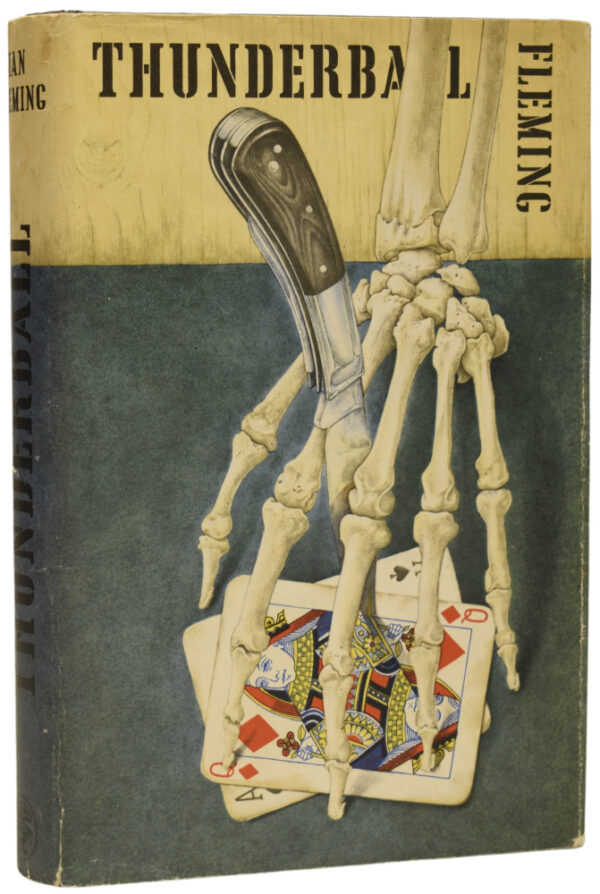
Thunderball
FLEMING, Ian Lancaster (1908-1964) [Spy thriller] FIRST EDITION, fifth impression, bibliographer's copy. Octavo (19 x 13cm), pp.254; [2], bank. Publisher's cloth-effect paper over boards with embossed skeleton hand design to upper board, gilt titles to spine, dust-wrapper illustrated by Richard Chopping priced at £4.95 via publisher's label. Ex-library copy with expected handling and wear, although quite presentable. Faint (partially erased) institutional stamp to copyright page else clean within, some splashing to foot of page edges, jacket with very little wear. Shows well. The majority of Cape's James Bond hardcover reprints were taken into the lending library system to replace existing well-worn stock. From the comprehensive James Bond collection assembled by Jon Gilbert (pencilled notes and signature within). His comprehensive guide to the works of Ian Fleming (2012) won the 16th Breslauer Prize for bibliography. Gilbert A9a (5).- $127
- $127
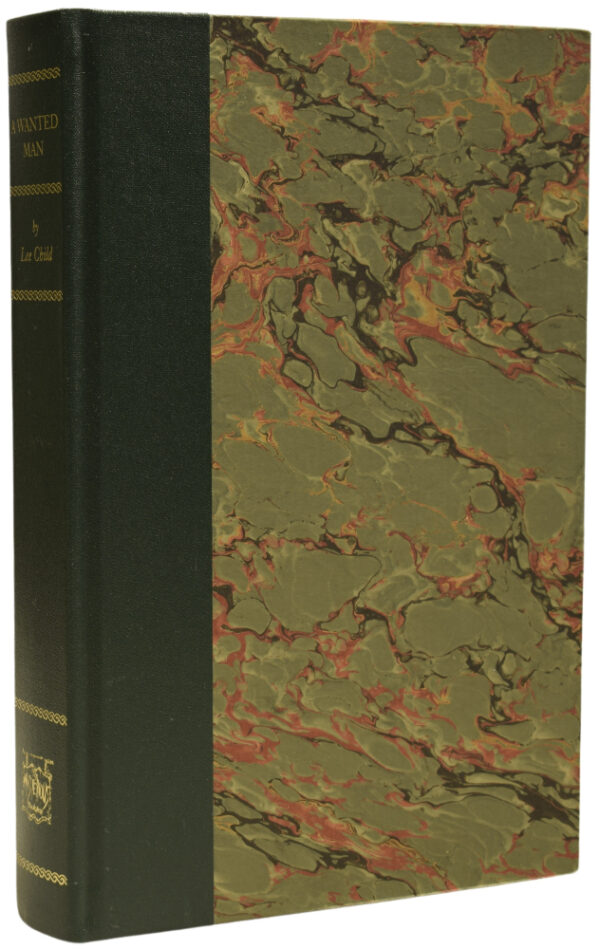
A Wanted Man. A Jack Reacher Novel
CHILD, Lee [pseudonym of GRANT, James Dover] (born 1954) [Thriller] SIGNED LIMITED EDITION. Octavo (24 x 16cm), pp.408. Number 25 of just 100 copies thus, SIGNED by the author in black ink to limitation page. Publisher's green quarter cloth, with gilt titles to spine and marbled paper over boards. Lilac endpapers. Smudge to fore-edge, either a production fault or transit mark. A fine, as-new copy. The seventeenth Jack Reacher novel. First published in 2012, this special edition contains a new introduction by the author. Lee Child has received multiple nominations for the prestigious Ian Fleming Steel Dagger, recognising best thriller of the year, and won the CWA's Diamond Dagger for a writer of outstanding body of crime fiction. Two blockbuster movies have been made from the Jack Reacher thrillers, plus the acclaimed Amazon Prime television series 'Reacher'.- $201
- $201

H.M.S. Cossack, 1958-1959.
FAR EAST STATION. Sole edition, signed by the ship's captain, David Seely, at the foot of his introduction. In 1959, Cossack completed a 15-year term of service in East Asia. This celebration of its last commission, during which it was stationed in Singapore, Hong Kong, and Japan, is unrecorded in institutions. Seely (1920-2011), the godson of Winston Churchill and of the future Edward VIII, fought in the Second World War and later in Malaya, commanding HMS Ajax between 1964 and 1965 and being mentioned in despatches. In 1966, he inherited the title Baron Mottistone and retired from naval service. Between 1992 and 1995, he was governor of the Isle of Wight. The text is split into a pictorial record of the commission and "not too factual departmental reports and sporting activities" (p. 4), enriched by humorous line drawings. Quarto. Original illustrated boards, red cloth backstrip, front cover lettered in black, endpapers renewed. Illustrations, maps, and advertisements throughout. Miniscule blue ink cross in main photo on p. 11. Boards stained and worn, one corner repaired, small losses at foot of first leaf and lower corner of p. 101, text unaffected: a very good copy.- $869
- $869
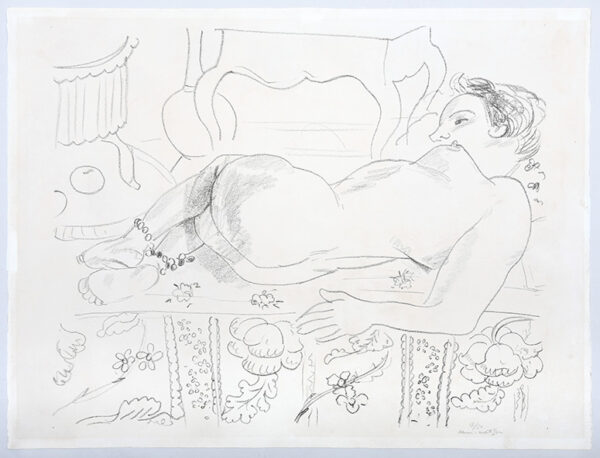
Nu couché sur sol fleuri.
MATISSE, Henri. Edition of 50. Signed and numbered in pencil lower right by the artist. Duthuit 503 Lithograph on Vélin d'Arches watermarked paper. Image size: 45 x 56 cm. Sheet size: 50.5 x 66 cm. Framed size: 86.6 x 101.1 cm. Paper lightly age toned otherwise in excellent condition. Presented in a decorative wooden frame with conservation acrylic glazing.- $33,429
- $33,429
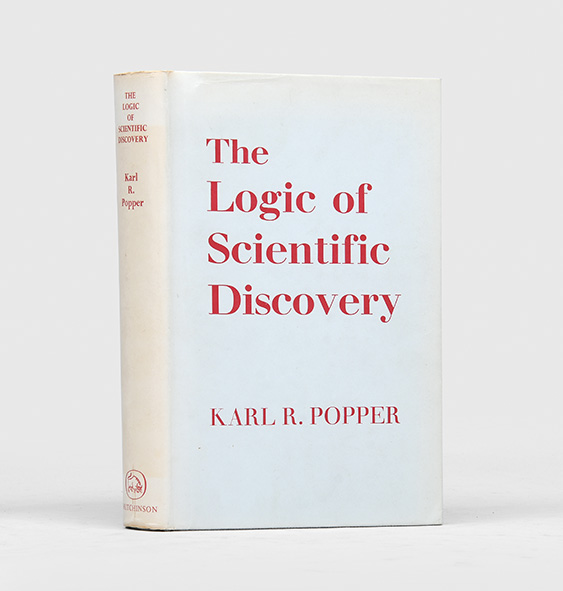
The Logic of Scientific Discovery.
POPPER, Karl R. First edition in English, first impression, of one of the most significant works in the philosophy of science. For the translation, Popper extensively rewrote the text, with new footnotes and 150 pages of new appendices. The work was first published in German in 1934; the English translation was published in the UK in January 1959, preceding the US edition in March. Octavo. Original grey cloth, spine lettered in gilt on red ground, light grey endpapers, top edge red. With dust jacket. Tables, diagrams, and manuscript facsimiles in the text. Unclipped jacket with hint of sunning to spine and a couple of tiny nicks: a fine copy in near-fine jacket.- $1,671
- $1,671
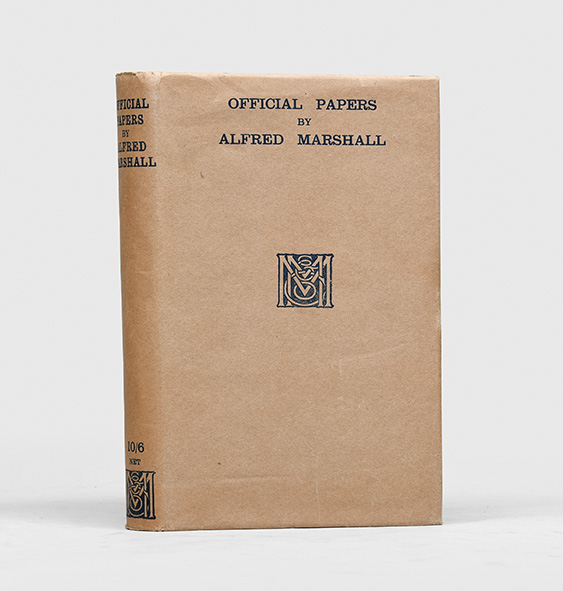
Official Papers.
MARSHALL, Alfred. First edition, first impression, of the author's collected contributions to public enquiries on economics, including a preface by its editor, John Maynard Keynes. Marshall prepared evidence for various enquiries covering poverty, currencies, tariffs, and international trade. Octavo. Original green cloth, spine lettered and ruled in gilt, covers ruled in blind. Tables in the text. Unclipped jacket with a hint of creasing, else: a fine copy in fine jacket.- $501
- $501

Sepher Masoreth
Edited by Joseph Ibn Rai. 8vo. Leather-backed red cloth. Printed by Giovanni di Gara, Venice 1607. First Edition. Text in Hebrew.The Masorah provides the number of times a particular word appears in the Bible. In his Bible commentary, the great Medieval Jewish scholar Jacob ben Asher sought to expound the significance of this phenomenon. This present work provides further studies utilizing this approach, thus reaffirming Jacob ben Asher's earlier efforts. According to many, Jacob moved to Spain with his father. It is also said that Jacob succeeded his father as the rabbi of the Jewish community of Toledo (Zacuto), while others say his brother Judah ben Asher did so. His brothers were also rabbis of different communities in Spain. He lived in abject poverty most of his life, and according to the Sephardic Community of Chios, is said to have fallen ill and died with his 10 companions on the island of Chios, in Greece, while travelling. Small repair to lower corner of title page, edges trimmed, one small closed marginal tear, generally clean internally.- $1,250
- $1,250
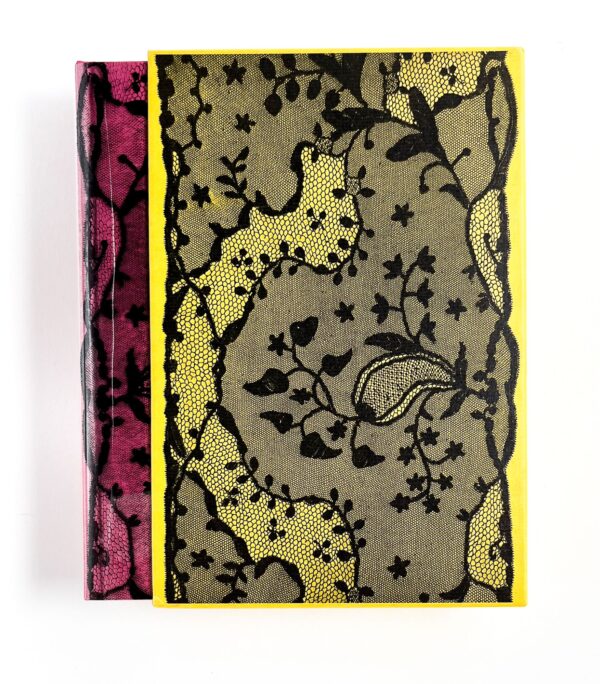
LOVE IN THE TIME OF CHOLERA
García Marquez, Gabriel Signed limited first English edition of García Marquez's ode to the persistence of romantic memory. Gorgeously designed edition of the author's acclaimed novel, first published in Spanish in 1985. The English translation was praised by Thomas Pynchon to the utmost reaches of superlative adjectives, and was the recipient of less frenzied but still glowing compliments from Michiko Kakutani. García Marquez's theme - romantic love that never fades, vows never broken; or, seen another way, the nightmare impossibility of permanently dismissing a determined suitor - struck Pynchon as "revolutionary," though his judgment that working in "love's vernacular" is a "daring step for any writer" may raise eyebrows among those familiar with genres and modes of writing in which these themes and treatments have never fallen out of fashion. García Marquez himself once said, with perhaps greater perception, that the revolutionary part of writing consists simply of doing it well: and he did. A beautiful copy of this signed limited US edition, which preceded the UK edition by several months. 9.25'' x 6.25''. Original quarter pink cloth with black cloth boards, gilt-stamped spine. In original decorative black lace-printed mylar protective jacket. With original yellow and black slipcase. Bright pink endpapers, fore-edge machine deckle. Translated from the Spanish by Edith Grossman. [10], 348, [4] pages. Signed by Garcia Marquez at colophon and numbered 107 of 350 signed and numbered copies of the first edition. Bright, sharp, clean, and tight overall. Fine in fine jacket and slipcase.- $5,000
- $5,000

Druidism The Ancient Faith of Britain
Wright, Dudley FIRST EDITION. Quarto, pp. [8], 192. 9 monochrome plates including frontispiece of "The Massacre of the Druids"; tail-pieces to each chapter. Publishers' green cloth with gilt titles to spine, and titles in black with framed trilithon motif blocked in black to upper board. Fore- and lower-edges uncut. Covers slightly surface soiled, and a little bruised to edge but bright. Attractive Art Nouveau pictorial bookplate of Arthur E. Baker to front paste-down. Scattered light foxing, mainly to prelims and textblock edge otherwise contents clean with no annotation or inscriptions. Study of the ancient religion, its ceremonies, temples and festivals, and its affinity with other faiths. Scarce.- $241
- $241
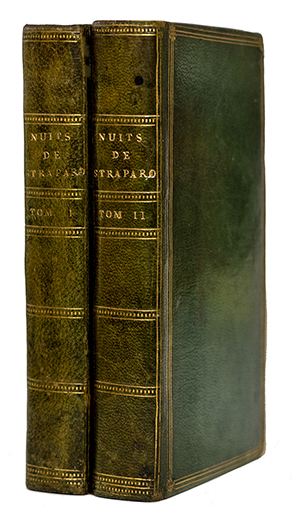
Les Facécieuses Nuicts (sic), Du Seigneur Straparole.
STRAPAROLA (Giovanni Francesco) 2 vol. in 12, de 1f. 426pp. 3ff. & VIII-451pp. 2ff. (1f. de titre de 2e partie après la p.136), pl. maroquin vert époque, dos lisse orné, encadrement d'un triple filet doré sur les plats, dentelle int., tr. dorées. Bon exemplaire en maroquin du temps. Rare. C'est la traduction de référence de l'oeuvre majeure de Straparola. Elle est due Jean Louveau et Pierre de Larivey. Les éditions anciennes sont rares. C'est un recueil de 75 histoires contées pendant 13 nuits de Carnaval et ou la fantaisie la plus débridée se mêle à la licence des situations, le tout dans un style populaire. Chacune des 13 nuits se termine par une énigme en vers. Rappelons que Perrault y a largement puisé pour ses Contes, mais aussi Mme d'Aulnoy et les frères Grimm. Brunet V.560 - Viollet-Leduc p.117 "Cette édition de 1726 a été revue par de La Monnoye, qui y a ajouté des remarques sur les sources où Straparole avait été puiser ses sujets".- $1,124
- $1,124

La langue des calculs, ouvrage posthume et élémentaire, imprimé sur les manuscrits autographes de l’auteur, dans lequel des observations, faites sur les commencemens et les progrès de cette langue, démontrent les vices des langues vulgaires etc.
CONDILLAC (E. Bonnot Abbé de) 2 parties en 1 vol. in 12, de 1f. 231pp. 2ff. d'ont l'errata & 1f. 250pp. 1f., pl. basane racinée époque, dos lisse orné, dentelle dorée sur les plats, bel exemplaire. (ex-libris mss. F.L. Barville, officier aux gardes). Véritable édition originale séparée, et non comme tome XXIII des oeuvres complètes. Cet ouvrage posthume est l'un de ceux qui eurent le plus d'influence sur la philosophie des sciences au XIXe siècle. Comme ses prédécesseurs dans la tradition rationaliste, Condillac regarde les mathématiques et leur langage comme modèle de connaissance. L'algèbre est ici considérée comme un modèle de langage bien fait et de modèle d'analyse. ¶ DSB II,383 - Honeyman n° 745.- $843
- $843
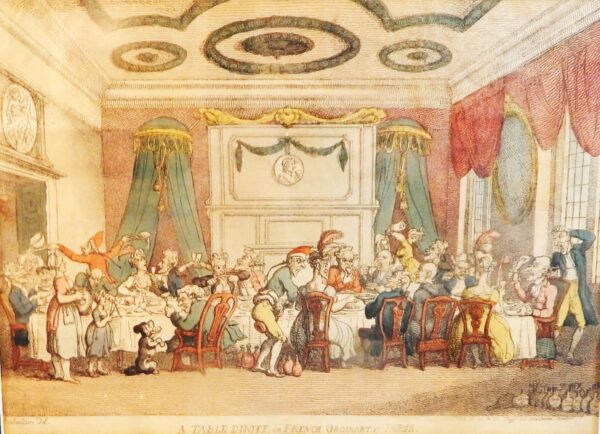
A Table d’Hote or French Ordinary in Paris
Rowlandson, Thomas Hand-colored etching approximately 9-5/8 by 13 5/8 inches. Published on May 30, 1810. Framed and glazed in a simple antiqued gold wooden frame with a hunter green mat. Not examined out of frame but appears to be in fine condition. Frame size is 17 by 21 inches. There appears to be a short manuscript inscription along the left edge of the print. Guests at dinner around a long table in an ornate room. Two men and a woman serve wine, one of them men pulling a cork and the other two spilling the wine. Another waiter spills soup on the head of a guest, wile a woman and child play a tambour and triangle as their dog begs for food. Bottles of various kinds of wine are seen on the floor in the lower right. Scarce Rowlandson original caricature. .- $1,150
- $1,150
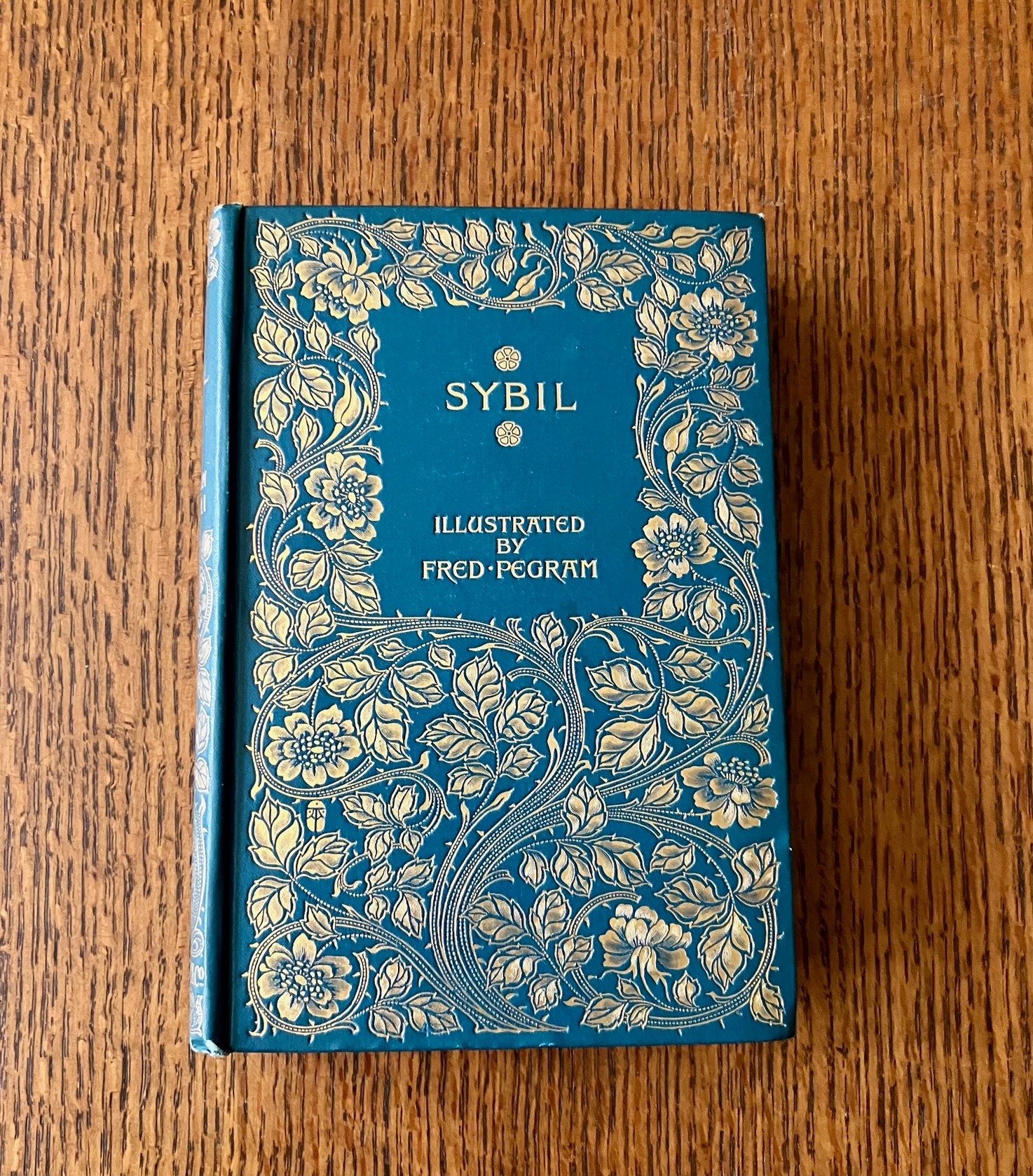
SYBIL. Or The Two Nations. With an introduction by H. D. Traill.
DISRAELI. BENJAMIN. -- PEGRAM, F. Illustrates. FIRST PEGRAM ILLUSTRATED EDITION. 8vo. (7.4 x 5.1 inches). Fully illustrated throughout with 40 fine drawings by Frederick Pegram, most full page. Neat previous owners name to the top of the title page otherwise a fine copy in the publishers delux binding of highly decorative dark blue cloth binding with gilt lettering and illustration by Albert Angus Turbayne to front board and spine. Yellow peacock design on white endpapers. All edges gilt. A fine and smart copy of this scarce beautifully illustrated book. -- More photos available on request.- $201
- $201

SENSE AND SENSIBILITY. With an introduction by Austin Dobson.
AUSTEN. JANE. ; Thomson. Hugh. Illustrates. FIRST HUGH THOMSON EDITION. 8vo. (7.8 x 5.4 inches). Illustrated with 40 full page line drawings. Publishers 6pp of adverts at the end, dated December 1895. Publishers original burgundy cloth with decorative blind stamped floral design to both boards, the front board lettered and ruled in gilt. Spine ruled and lettered in gilt. Page edges untrimmed. A neat previous owner name to the top of the half title page otherwise a very good, bright copy throughout. The cloth is faded to the spine and has some bumping and rubbing to the edges. Overall still a very good copy of this beautiful book.- $401
- $401
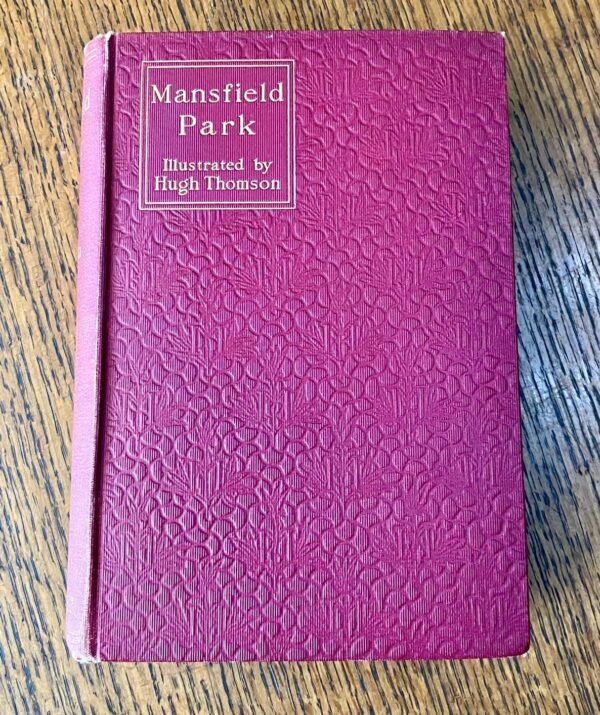
MANSFIELD PARK. With an introduction by Austin Dobson.
AUSTEN. JANE. ; Thomson. Hugh. Illustrates. FIRST HUGH THOMSON EDITION. 8vo. (7.8 x 5.4 inches). Illustrated with 40 full page line drawings. Publishers original burgundy cloth with decorative blind stamped floral design to both boards, the front board lettered and ruled in gilt. Spine ruled and lettered in gilt. Page edges untrimmed. A crisp, clean and bright copy throughout. There is a little fading to the spine and the corner tips are a little rubbed, otherwise this is a near fine copy of this beautiful book. Becoming increasingly difficult to find in collectable condition in the publishers cloth.- $635
- $635
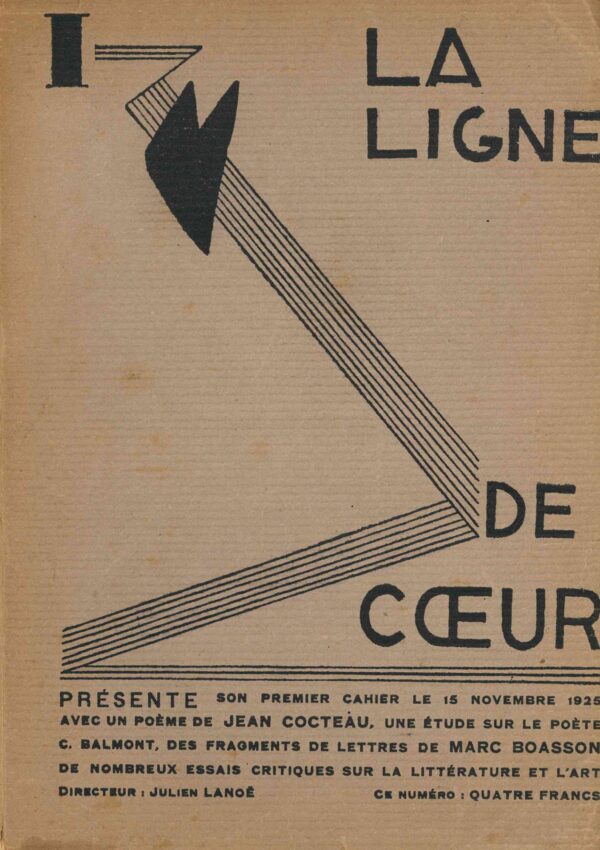
La Ligne de Coeur. Revue mensuelle. First series, No. 1 (November 1925) through 12 (Mars 1928) and Second series, No. I (Mai 1933) through V (Mai 1935) (all published)
A complete run in 17 total issues of the rare avant-garde literary journal. Octavo (8 x 5 5/8 and 8 3/4 x 5 1/2 inches). Original pictorial wrappers (first series) and original printed self-wrappers (second series). Covers of first issue detached, small loss to front cover of second issue, overall very good. Nantes: self-published, 1925-1928 and 1933-1935. This collection comprises a rare complete run of the literary avant-garde journal edited by Julien Lanoë (1904-1983), French writer and industrialist, and President of the Society of Friends of Musée des Beaux-Arts in Nantes from 1936 to 1970. Issues of the first series range from 62 to 72 pages, and the second series from 8 to 16 pages. The issues are comprised of prose and poetry, with contributions from Jacques Maritain, Maurice Fombeure, Robert Garric, Jean Cocteau, Marc Boasson, Constantin Balmont, Max Jacob, Jean-Marie Terrien, Henri Barbot, Léon Bloy, Roger Lesbats, Georges Hugnet, Claude Cahun, Victor-Emile Michelet, Maurice Sachs, Louis Émié, Pierre Menanteau, André de la Perrine, Jules Supervielle, André Salmon, Gabriel Marcel, Jean Aurenche, Philippe Thual, Alfredo Gangotena, Paul Sabon, Louis Guilloux, Pierre Colle, Edward Millpotts, Pierre Reverdy, Giorgio de Chirico, Georges Syam, André Gaillard, and others. Issue no. 4 contains the first printing of an important and often-quoted article by Claude Cahun, titled "Carnaval en chambre". In the brief four-page essay, she deals with the theme of the mask in art and society. Scarce; as of April 2024, OCLC shows holdings at four North American libraries, not all of which are complete runs.- $2,500
- $2,500
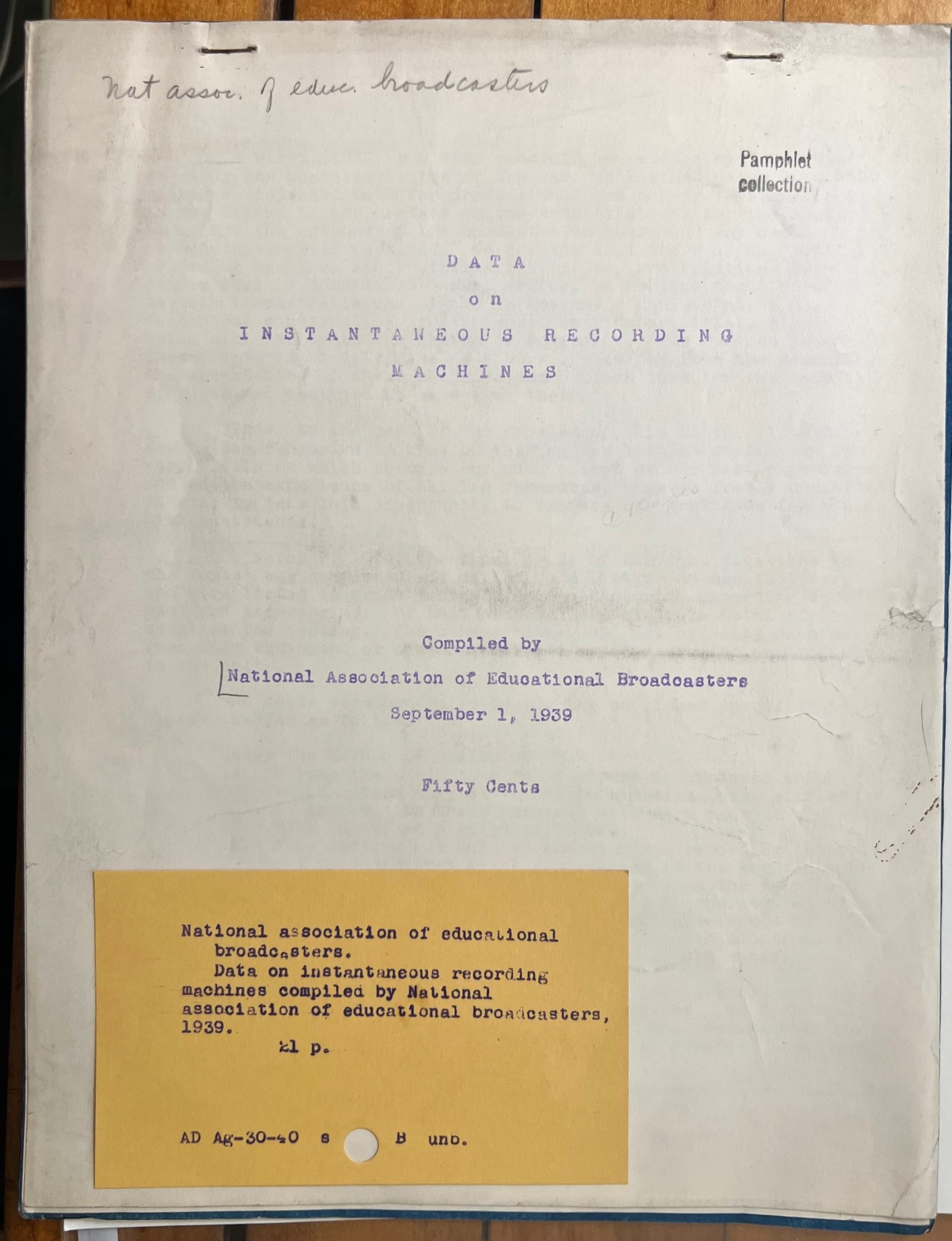
(Audio Recording) Data on Instantaneous Recording Machines
National Association of Educational Broadcasters. **NO Copies listed in WorldCat** (Audio Recording) Data on Instantaneous Recording Machines compiled by the National Association of Educational Broadcasters, September 1, 1939. 11"x8.5" 21 leaves with 4 plates of blueprinted graphs of frequency response curves and etc. Stapled at top. Printing seems to be mimeograph. Provenance" Library of Congress, with their small "Pamphlet Collection" stamp at top right corner and surplus rubber stamp on rear page. VG copy. Interesting document reviewing the state-of-the-art auto recording devices at a still-young period of this technology. [++] No copies found in WorldCat.[++] Comes with a nice piece of LC ephemera--a carbond copy of the LC card catalaog crd (or one of them, at least)- $200
- $200

Der Traum
Marc, Franz Farblithographie nach dem Ölgemälde von Franz Marc, erschienen als Kunstbeilage in,Derriere le Miroir' 1962 in Paris. Das original Gemälde war ein Geschenk Marcs an Wassily Kandinsky (18661944) im Tausch gegen dessen Gemälde "Improvisation 12". Gefaltet erschienen. Faltung zu erkennen. Im Druck signiert. 37.8 x 56 cm (15 x 22 inches).- $219
- $219
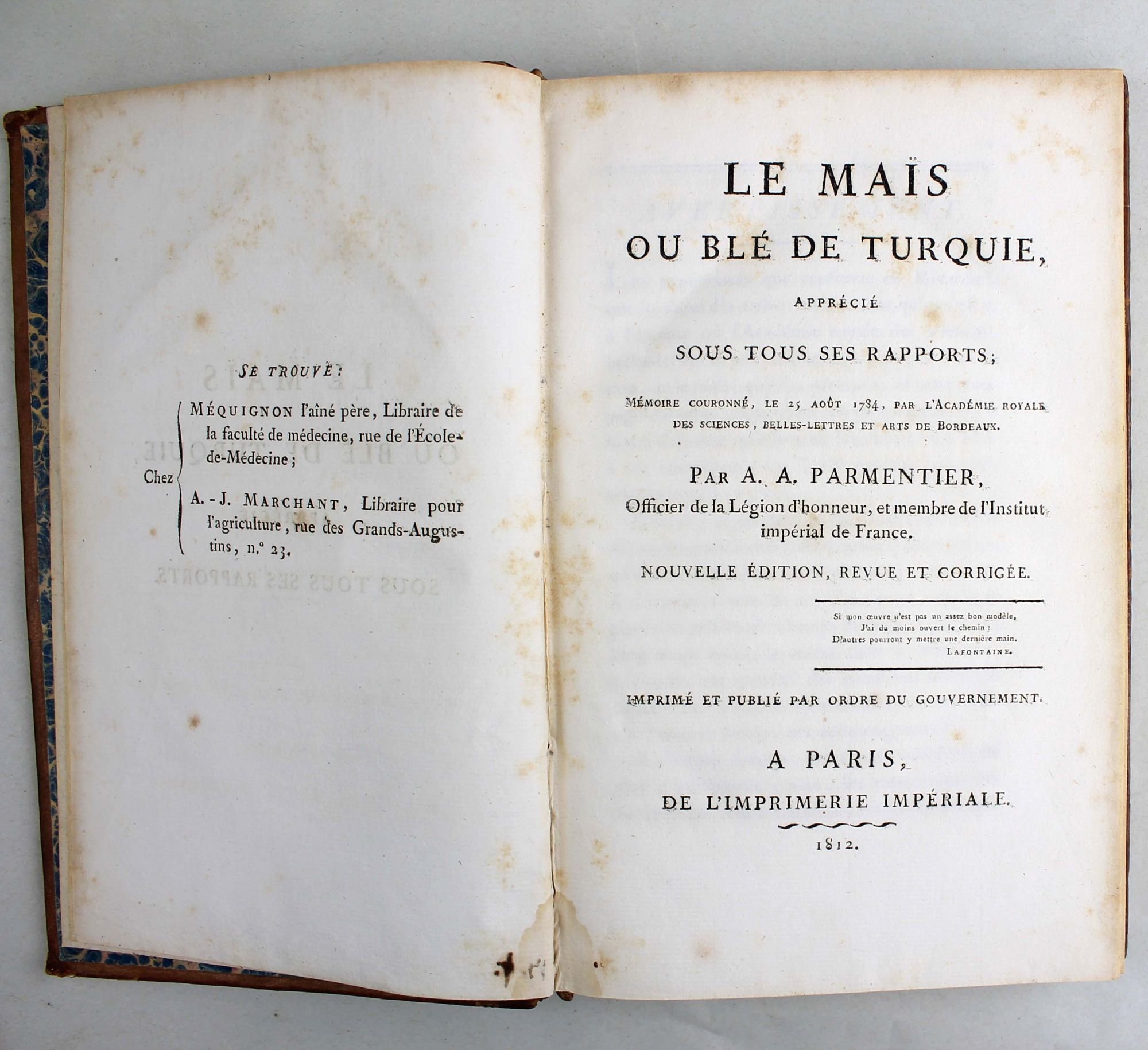
Le maïs ou blé de Turquie, apprécié sous tous ses rapports ; mémoire couronné, le 25 août 1784, par l’ Académie royale des Sciences, Belles-lettres et Arts de Bordeaux
PARMENTIER, A. A. *** Seconde édition, revue et augmentée de plusieurs chapitres. Ce mémoire avait été imprimé une première fois en 1784 par l'Académie de Bordeaux "mais à un si petit nombre d'exemplaires, qu'il a été impossible de le mettre en vente", lit-on dans la préface de Parmentier. Variétés du maïs, culture, recettes de pain de maïs, boissons, maïs-légume, polenta, potages, gâteaux, biscuits, galettes. On a relié dans cet exemplaire, après la préface, une pièce rare : "Notice biographique sur M. Antoine-Augustin Parmentier" par A. F. Sylvestre. (P., Huzard, 1815). 22 pp. Défauts aux coiffes, des rousseurs. *** In-8 de VIII, 22, 303, (1) pp. Veau brun raciné, dos orné, encadrement doré sur les plats, tranches jaunes. (Reliure de l'époque.) - - - - - - - - - - - - - - - - - - - - - - - - - - - - - - - - - - - - - - - - - - - - - - - - - - - - - - - - - - - - - - - - - - - - * - -.- $506
- $506

Historical Memoirs of the Irish Bards. Interspersed with Anecdotes of, and Occasional Observations on the Music of Ireland. Also, an Historical and Descriptive Account of the Musical Instruments of the Ancient Irish. And an Appendix, Biographical and Other Papers, with Select Irish Melodies.
WALKER (Joseph) FIRST LONDON EDITION. 4to, 264 x 197 mms., pp. [iv] v - xii, 166, 124, engraved portrait frontispiece of Cormac Common, engraved head and tailpiece, several engravings in text, engraved plate at end of text block, attractively bound in contemporary mottled calf, with elaborate gilt borders to a floral motif, enclosing a triple gilt rectangular border, with a fan motif at each corner, spine gilt in compartments ( but faded), morocco label; bound without the two pages of music as an appendix, perhaps deliberately, with the binder having neatly excised the catchword and repaired the damage to the paper. Brian Boydell, writing in New Grove, asserts that the Irish antiquary, Joseph Cooper Walker (1761 - 1810), in his book, "though written in a turgid and verbose style, [it] includes much information not available elsewhere, particularlry in relation to the haper Turlouigh Carolan. Five poems and seven airs by Carolan are included in a chapter on his life. It also includes a highly fanciful essay by William Beauford, The Poetical Accents of the Irish, which sought to prove that a system of musical notation was in use in Ireland in the 11th and 12th centuries. In all, 43 Irish airs are included, providing one of the early sources of native Irish music, and a stimulus to its study, which was to bear fruit shortly afterwards in the work of Edward Bunting." Boydell's remarks are not that different in kind from those in the Monthly Review for December 1787: "The present rage for antiquities in Ireland surpasses that of any other nation in Europe. The Welsh who have no contemptible opinion of the antiquity of their poetry and music are left among the children of the earth by Mr. Walker and the writers of the Collectanea de Rebus Hibernicis. Indeed, there is no antiquity short of the creation that can justify these authors." Morris, H. B. (2004). Joseph Cooper Walker, Esq. (C. 1761-1810), A Forgotten Irish Bard: A Dissection of His Advertisement as a Map to His Melodies. Inquiry: The University of Arkansas Undergraduate Research Journal, 5(1).- $1,103
- $1,103

Advice to Mothers, on the Best Means of Promoting the Health, Strength, Beauty, and Intellectual Improvement of their Offspring; With Instructions Respecting their own Health and Happiness . Interspersed with much original and interesting Matter.
BAILLIE (J,) 8vo, 208 x 127 mms., pp. 318. BOUND WITH: Wesley, John. Primitive Physic: or, an Easy and Natural Method of Curing most Diseases. Burslem: Printed by J. Tregortha, 1812. 8vo (in 4s), pp. 103 [104 blank], followed by six leaves y intended for another medical work. 2 volumes in 1, bound in contemporary sheepskin, black leather label. Two scarce provincially-printed medical books, bound (possibly from the parts, given inscription about binding) in a volume and presented by a Lancashire mother, Penelope Vavasour, to her daughter Julia in the year the latter gave birth to her second child. T he first work is in two sections. The first section concerns itself with matters more physical, with chapters on conduct during pregnancy, a section on childbirth, and proper food for infants; the second with matters more spiritual, with chapters on the origin of pride and vanity, the choice of toys, and books. Library Hub records 2 copies, at the BL and NLS, while Worldcat adds 4 more, 3 of which are in New York: Columbia,NYPL, SUNY, and Virginia. The second work is a reprint of John Wesley's 1747 medical guide printed in the Staffordshire town of Burslem. Library Hub records just a single copy, in the Wellcome Collection, to which Worldcat adds 2 copies, both in the United States: the National Library of Medicine and Wesleyan College, Georgia. To the rear are bound the contents leaves and a leaf from the introduction of an edition of William Buchan's Domestic Medicine; given the similarities in paper and print with the pages that immediately precede it, it seems likely to be from Tregortha's 1812 Burslem-printed edition (two American institutions only in Worldcat), and therefore possibly appended by accident in the print-shop.- $1,471
- $1,471
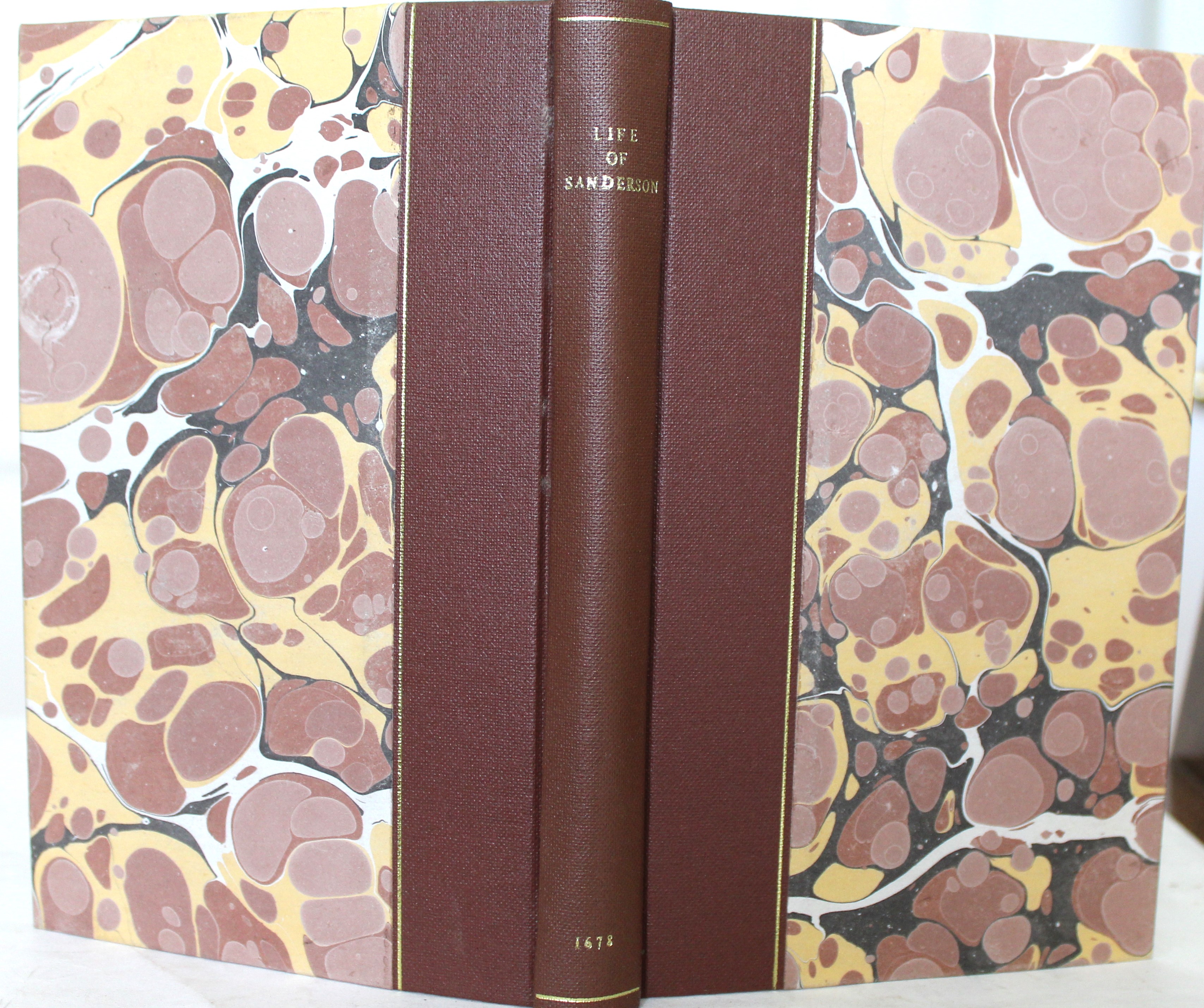
The Life of Dr. Sanderson, Late Bishop of Lincoln. Written by Izaak Walton. to which is added, Some short Tracts of Cases of Conscience, written by the said Bishop
SANDERSON (Robert) . WALTON (Isaac) FIRST EDITION. 12mo, 175 x 108 mms., pp. [240], recently and unsympathetically recased in quarter buckram, marbled boards; lacks portrait. A Calvinist, Bishop Robert Sanderson, (1587-1663) made an impact his contemporaries, including Charles I, as Walton records, "I carry my ears to hear other Preachers', said the king, 'but I carry my Conscience to hear Mr. Sanderson, and to act accordingly." ONDB records, "A doctrinal Calvinist, Sanderson had tried to resolve the controversy created by Richard Mountague's books in the mid-1620s by offering a slight alteration of the sublapsarian doctrine of predestination. Nevertheless, he insisted that the Church of England held that divine act of election was entirely gratuitous and to suggest otherwise was 'quarter-Pelagian and Arminian novelty' (Works, 5.277). Marginal notes condemning the Arminians and 'their Semipelagian subtilties' continued to appear in all editions of his sermons until 1657, and vigorous efforts in the late 1650s by Henry Hammond, Thomas Pierce, and others to change his mind had little success. Sanderson's soteriology, his denunciations of usury and idleness, and his support for the reformation of manners show that he had much in common with puritans. Izaak Walton's biography of Sanderson wholly ignores his Calvinism, his agreement with puritans on many issues, and his quarrels with Hammond and the churchmanship that Hammond and his friends represented. However, throughout his long career he rejected puritan arguments against ceremonies, probably in part because of his observation of the actions of John Cotton and his followers at nearby Boston. Sanderson, deeply concerned to retain protestant unity against Rome, was an anti-puritan in the Whitgiftian mould, an excellent example of the way 'that even men who shared great tracts of ideological terrain with the Puritans could end up hating them with a passion' (Lake, 115)." I suspect that the number of scholars who would be familiar with and under stand the issues, doctrines, and beliefs in those few sentencdes would be very feew.- $221
- $221
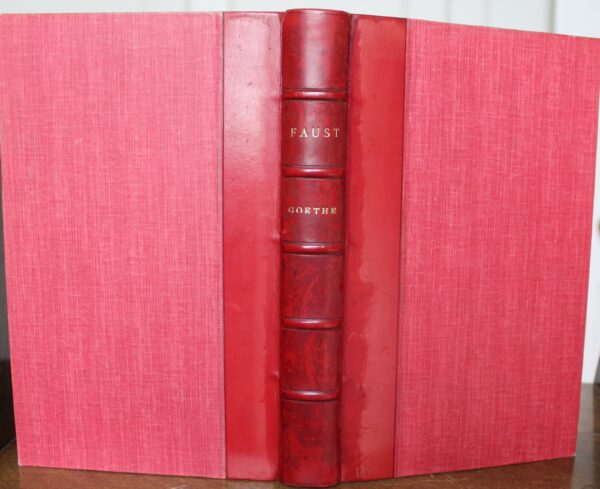
New Idyls by Gessner. Translated by W. Hooper M D. With A Letter to M: Fuslin on Landscape Painting and the Two Friends of Bourbon. A Moral Tale.
GESSNER (Salomon) Large 8vo (in 4s), 270 x 173 mms., pp. [vi], 129 [130 blank], engraved title-page followed by drop-title leaf, 9 full-page enraved plates, 10 engraved tail-pieces, and 2 engraved head-pieces, with later inscription and date,"William Burton/ October 1807" and a transcription of a letter in French by Fuslin to Gessner and Gessner's response on three pages, bound in contemporary calf and expertly rebacked with new red morocco. A very good copy This first translation of Moralische Erzæhlungen und Idyllen (Zurich, 1756) is easily the best-known work of Salomon Gessner (1730 1788), the Swiss artist, poet, government official, etc. The plates are indeed rather splendid. The Monthly Review for 1776 commented, "Perhaps there is no object in poetical criticism that requires a more consummate judgment than to work with certainty the dividing line between what is simple and what is silly. The innumerable errors of this kind, that we have met with confirm the truth of this observation, and it has occurred once or twice on the view of the publication before use." Ah. well: enjoy the illustrations. Martin Bircher, et al., Salomon Gessner: Maler und Dichter der Idylle 17301788. Herzog August Bibliothek, Wolfenbüttel 1982,- $662
- $662
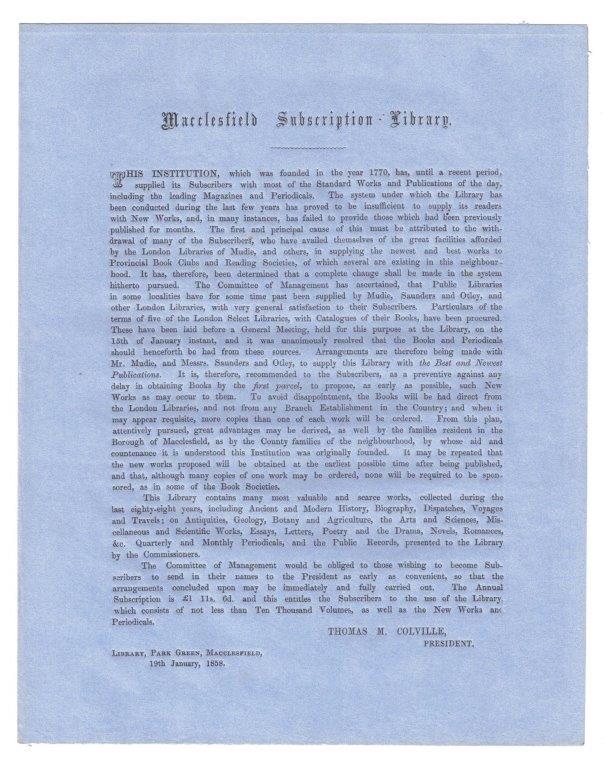
This Institution, which was founded in the year 1770, has, until a recent period, supplied its Subscribers, with most of the Standard Works and Publications of the day, including the leading Magazines and Periodicals. The system under which the Library has been conducted during the last few years has proved to be insufficient to supply its readers with New Works,. The first and principal cause of this must be attributed to the withdrawal of many of the Subscribers, who have availed themselves of the great facilities afforded by the London Libraries of Mudie, and others, in supplying the newest and best works to Provincial Book Clubs and Reading Societies,. Arrangements are therefore being made with Mr. Mudie, and Messrs. Saunders and Otley, to supply this Library with the Best and Newest Publications. It is, therefore, recommended to the Subscribers,. to propose, as early as possible, such New Works as may occur to them. This Library contains many most valuable and scarce works, collec
MACCLESFIELD SUBSCRIPTION LIBRARY. 4to (238 x 188 mm), [4]pp., printed on blue paper, pages [2-4] are blank, signed in letterpress at foot of page [1] Thomas M. Colville, president, Library, Park Green, Macclesfield, 19th January, 1858, a fine copy. A leaflet (printed text on p.[1] only) containing information on the library management and rules for subscribers.- $100
- $100
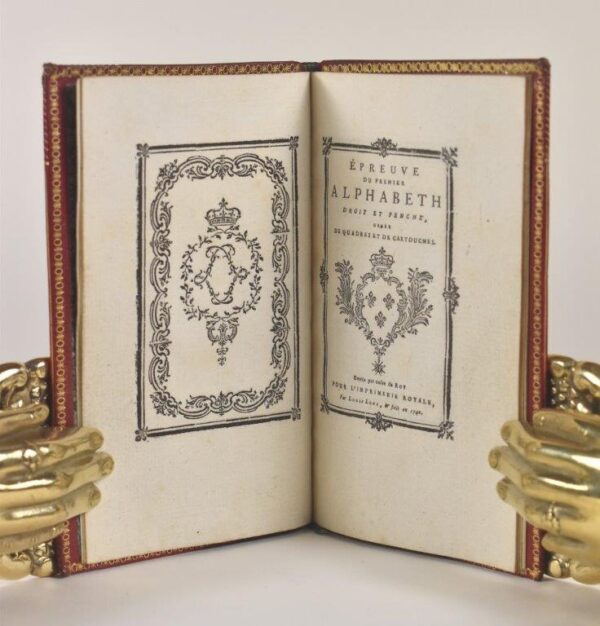
Épreuve du Premier Alphabeth Droit et Penché, ornée de Quadres et de Cartouches.
LUCE (Louis) 32mo (106 x 65 mm), 8ff. early MS. notes to front fly-leaf, marbled endpapers, full contemporary red morocco, small gilt dot tool to corners of both upper and lower board, smooth spine ruled in gilt a lettered direct, turn-in and board edges tooled in gilt, some minor rubbing otherwise a fine copy, housed in a green quarter morocco slip-case. A fine copy of this rare specimen of microscopic type. This specimen presents Luce's "Perle" type in roman and italic (4 point), the smallest type cut to that date. This small specimen contains 3 pages composed exclusively of ornaments, and each page is printed within rules and vignettes. Louis René Luce (c.1695?1774) Type designer, punchcutter and engraver at the Imprimerie Royale, from about 1740 until 1770. He was the third royal engraver of this name, preceded by his father-in-law Alexandre, who had succeeded Philippe Grandjean. "One of the greatest achievements of Louis Luce was his cutting the character which he named "La Perle," which was the smallest body that had ever been cut or cast. [he issued this] specimen of his microscopic type, both Roman and italic, which was cut in emulation of the celebrated Sedanoise editions. Although much smaller, it is nevertheless superior."Bigmore & Wyman. In 1773 all of Luce's work, i.e., 7 typefaces, 8 sets of initial caps, some vignettes, some ornaments, and 15 "poetic" typefaces, were purchased by special command of Louis XV for 100,000 Livres. Provenance: Two bookplates to front endpapers: Ex-libris Le Mis. de Biencourt; "Ex-libris Biencourt-Poncins." Audin, no. 3 ; Birrell and Garnett, p. 16 ; cf. Bigmore and Wyman I, 446. Brunet III, 1204, Graesse IV, 277.- $4,606
- $4,606

The prize: or, the lace-makers of missenden
BARNARD, Mrs. Caroline [4], 167, [1], 12pp. With a half-title, an engraved frontispiece, and a terminal publisher's advertisement catalogue. Contemporary blind-ruled calf, recently rebacked, contrasting morocco lettering-piece. Heavily rubbed, spine sunned. Hinges exposed, recent bookplate of Francis Edwards of Northwood to FEP, offsetting to title, scattered spotting. The first edition of an uncommon, decidedly conservative provincial conduct-of-life novel for children, relating the life in Little Missenden of two teenage Fielding sisters, Rose and Sally, who are participants in an established lace-school and competition. Throughout the novel hard-work, localism and the approval of a philanthropic gentry are the victors over the wily incomers from 'Lonnon'. The conjecture by Emily Sunstein (Mary Shelley: Romance and Reality p.415) that this work and Barnard's Parent's offering (London, 1813) could have been pseudonymous works by Mary Shelley, author of Frankenstein and step- daughter of the publisher, seems unlikely. However, it is nevertheless a great coincidence that Shelley had moved to Buckinghamshire in 1816, and that Claire Claremont - her step-sister - refers to reading a copy of The Parent's Offering, in her journal, whilst living with the couple in Pisa during the summer of 1820. Size: 12mo- $1,671
- $1,671
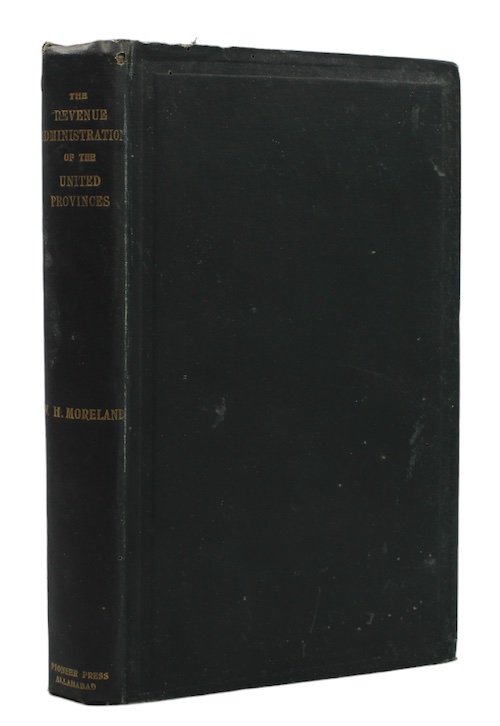
The revenue administration of the united provinces
MORELAND, W. H [4], xiv, 203pp, [1]. Original publisher's blind-stamped green cloth, lettered in gilt to spine. Rubbed and marked, numerous minute wormholes. Ink-stamp of Brajmohan Lal Dave to recto of FFEP, pencilled shelf-marks to head of title, worm-track to lower margin of initial six gatherings, scattered spotting. An authoritative review, by British Civil Servant William Harrison Moreland (1868-1938), of the administration of Uttar Pradesh, most particularly in relation to land tenure and real property tax, compiled for the use of junior officers of the Indian Civil Service. Size: 8vo- $334
- $334
